History often remembers grand moments of victory and triumph, but it also carries scars from tragic events that brought immense sorrow and loss. The Cocoanut Grove fire, one of the deadliest nightclub fires in history, is one such grim event that forever changed the face of fire safety standards. In this blog post, we’ll look at the Cocoanut Grove Fire, what happened after, and how it changed things forever. We’ve also included some old photos to help you understand how big and sad this event really was.
The Cocoanut Grove: A Nightclub in its Heyday
The Cocoanut Grove was a bustling, glamorous nightclub located in Boston, Massachusetts. During the 1930s and 1940s, it was a popular hotspot, attracting both local revelers and Hollywood’s finest. With its palm tree decorations, the club had a tropical, exotic ambiance that offered a delightful escape from the world outside. Frequented by both the city’s elite and its everyday patrons, the club was a labyrinth of bars, lounges, and dining rooms, featuring tropical décor to give the feel of a South Seas paradise.
The Tragedy: A Night of Unimaginable Horror
The night of November 28, 1942, started as a typical busy Saturday. The club was packed with over 1,000 people, nearly twice its legal capacity, all there for a night of revelry and entertainment. The cause of the fire was seemingly trivial, a small flicker of flame that would quickly evolve into a monstrous inferno. A young busboy was asked to replace a lightbulb that a patron had removed in the downstairs Melody Lounge. To see in the dimly lit space, he lit a match, quickly extinguishing it once the bulb was in place. However, the small flame was enough to ignite the highly flammable ceiling decorations made from artificial palm fronds.
The Blaze: Havoc Unleashed
The fire spread with a speed that was truly terrifying, engulfing the club in less than five minutes. Thick, choking smoke filled the premises, reducing visibility and making it impossible to breathe. Panic ensued as people frantically tried to escape, but the overcrowded club turned into a deadly trap.
One of the main exits, a revolving door, was soon jammed with people trying to flee, effectively blocking it. Some exits were locked, allegedly to prevent patrons from leaving without paying, while others were concealed by draperies and not marked properly. Most windows were boarded up or had been bricked over to prevent break-ins.
Because of these severe safety shortcomings, many patrons were trapped. The rapidly spreading fire and intense, suffocating smoke led to horrifying casualties. People were either overcome by smoke inhalation or were fatally trampled in the desperate rush to escape.
The Casualties: A Sobering Toll
In total, 492 people died in the Cocoanut Grove fire. This was more than 30% of the estimated 1,000 people who were in the club that night. The high death toll was a direct result of the overcrowded conditions, the rapid spread of the fire, and the inadequate and inaccessible exits.
The fire erupted so rapidly that thick, toxic smoke filled the nightclub within minutes, leaving the patrons struggling to breathe. The carbon monoxide in the smoke replaced the oxygen in their lungs, causing them to lose consciousness and eventually suffocate. Many victims were found in their seats or slumped over tables, suggesting they were overcome by the smoke before they even had a chance to react to the fire.
Others were trampled in the stampede to escape the flames, crushed in the desperate rush for the exits. They were found piled up near the club’s revolving door, which became jammed and ineffective early in the crisis. More victims were found near other exits that were either locked or hidden behind curtains, implying that these individuals had been close to escaping but were thwarted at the last moment.
In addition to those who died, hundreds of patrons were seriously injured. Approximately 166 people were hospitalized with severe burns, many of them life-altering. Others suffered from respiratory problems and psychological trauma. The scars, both physical and emotional, marked survivors for life, leaving them with a grim reminder of the horrific event.
The fire also had a traumatic impact on the city’s medical community. Boston’s hospitals were suddenly flooded with hundreds of burn victims, a scenario for which they were wholly unprepared. Many medical personnel were profoundly affected by the experience, with some dedicating their careers to improving burn treatment as a result.
Aftermath of The Cocoanut Grove Fire
Following the fire, emergency services faced the herculean task of identifying the victims and notifying their families, a process that was both emotionally draining and logistically challenging. The city’s morgues were overwhelmed, and a temporary morgue had to be set up at a local armory to accommodate the large number of victims. For many families, the agonizing wait to hear about their loved ones added to the pain of the tragedy.
The emotional trauma of the fire had a profound effect on the survivors, families of the victims, and the wider community. Many survivors carried physical and psychological scars from that night, grappling with the horror of what they had experienced and the memory of those they had lost. Some survivors and rescuers were diagnosed with post-traumatic stress disorder, a condition that was not well understood or treated at the time.
The fire also had a considerable impact on Boston’s legal and political landscape. The club’s owner, Barney Welansky, was convicted of manslaughter due to the lack of safety measures at Cocoanut Grove. The case set a precedent and sent a strong message to business owners about their responsibility for patron safety. Despite this, many victims and their families felt that justice was not adequately served, with Welansky serving less than four years of his 15-year sentence.
Furthermore, the Cocoanut Grove Fire catalyzed significant changes in fire safety regulations and building codes. Public outrage and the subsequent investigation led to a crackdown on violations, tighter controls on building materials, and more rigorous inspections. Exit requirements were also overhauled to include panic bars and outward-opening doors, features now standard due to the lessons learned from this catastrophe.
The medical community was deeply affected as well. The sheer number of burn victims pushed Boston’s medical facilities to their limits and exposed inadequacies in burn treatment. As a result, there were significant advancements in the care of burn victims, including new techniques and protocols for treating burns and helping victims recover physically and psychologically.
#1 Stanley Tomaszewski swearing testimony of Cocoanut Grove Night Club Fire.
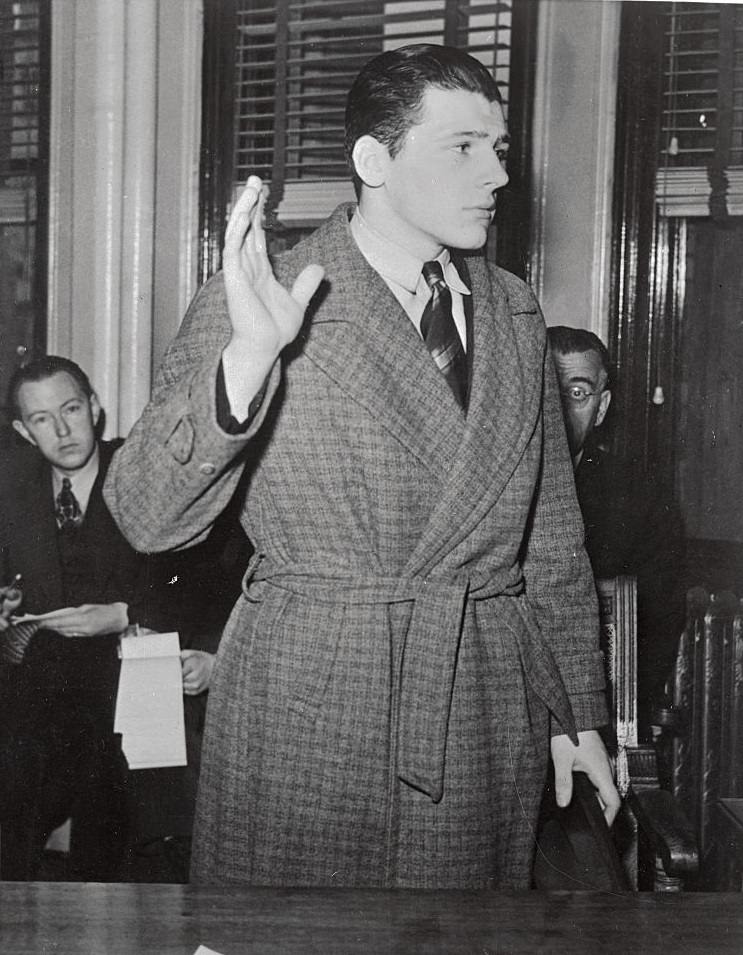
Stanley F. Tomaszewski, 16, busboy employed at Cocoanut Grove, is sworn in prior to testifying at a hearing at fire headquarters. Tomaszewski, who is a model high school student, and star athlete, was changing a light bulb turned off by a prankster when a match set fire to the make-believe palm trimmings.
#2 Men carrying badly burned woman.
#3 Burnt exterior of Cocoanut Grove Night Club.
#4 Two unknown victims of the horrible Cocoanut Grove fire.
#5 Barnett Welansky Arriving at Police Building.
#6 Martin Sheridan handing donated blood to nurse.
#7 Nurses at work in the aftermath.
#8 Clifford Johnson, 21, exercises on special equipment over his bed in Boston City Hospital, Sept. 16, 1943.
#9 Reporter Examines Window of Cocoanut Grove.
#10 Fire Victims waiting receiving Aide. A girl walks in horror through the prone victims, seeking a loved one.
#11 Burned out Night Club.
#12 A view of the fire-ruined interior of the Cocoanut Grove nightclub after the bodies of the victims were removed.
#13 Edith Adams, head of Homestead House at Wellesley College, eaving the morgue after identifying the body of Margaret Whitson, one of her students.
#14 Man carrying Cocoanut Grove burn victim.
#15 Two men carrying one of the victims of the Cocoanut Grove fire to safety.
#16 Victims being removed from Cocoanut Grove Night Club.
#17 Another victim of the tragic five-alarm fire at the Cocoanut Grove Night Club is carried out on a stretcher from the smouldering ruins.
#18 Bodies of four victims of the fire that destroyed Boston’s popular Cocoanut Grove Night Club last night (November. 28) lie in the street, waiting removal to the city’s overcrowded morgues.
#19 Relatives of the died people in the Cocoanut Grove nightclub fire wait in line outside a mortuary to identify the bodies of their loved ones, Boston.
#20 Police, firemen, reporters, and the curious gather at the entrance to the Cocoanut Grove nightclub in Boston on November 29, 1942.
#21 Chairs, shoes, and sheet music lie on the sidewalk outside the Cocoanut Grove nightclub in Boston on November 29, 1942.
#22 Victims lying on the street waiting to be taken to hospitals or morgues.
#23 A priest is administering last rites to one of the victims of the tragic fire.
#24 Men in the service of Uncle Sam donned white coats and aprons over their uniforms and assist in helping to identify victims of the fire at the morgue.
#25 A fireman surveys the ruins of the Cocoanut Grove Night Club, destroyed by fire last night (November 28).
#26 Broken windows of Cocoanut Grove Night Club after fire.
#27 People outside Cocoanut Grove Night Club removing bodies.
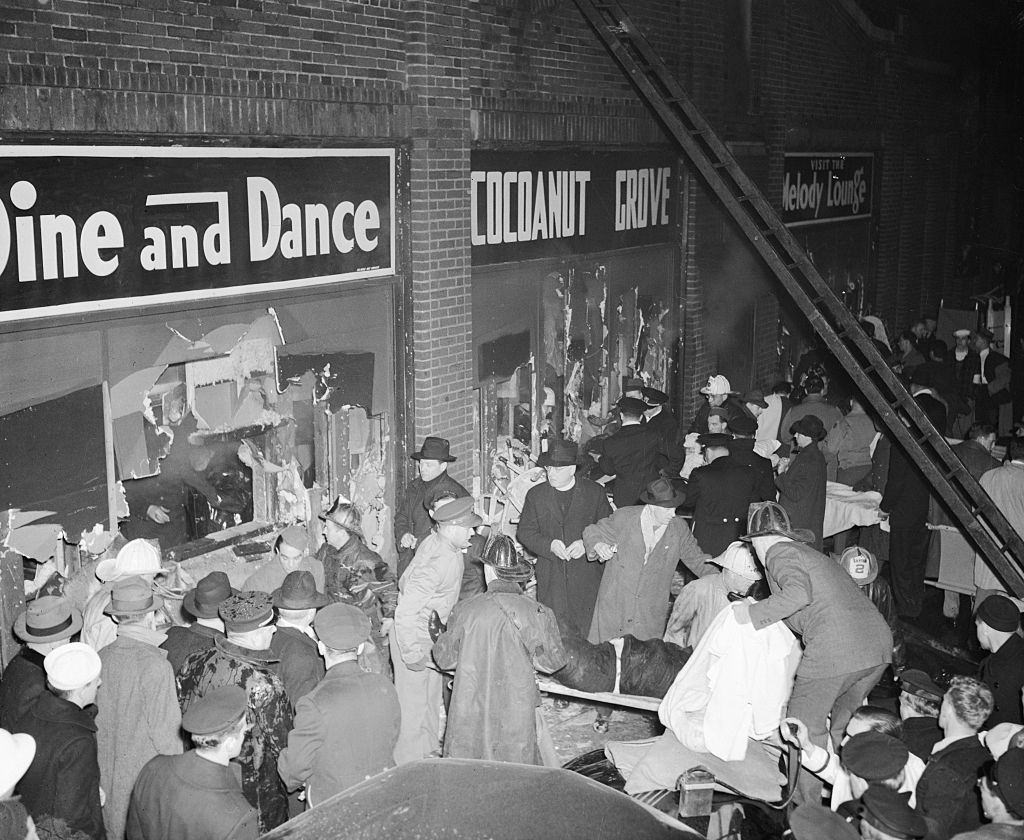
This photo was taken shortly after the holocaust, firemen, priests, and service men stand by the rear entrance to the night club, most of them numbed by the terrible sight of charred and broken bodies being carried through shattered windows and doors. One victim is shown on a stretcher, foreground.
#28 Volunteers waiting to remove Cocoanut Grove Night Club fire victims.
#29 Wards and rooms of Boston Hospital were filled to capacity with victims of the Cocoanut Grove Night Club fire.
#30 The charred ruins of the bar after the fire.
#31 A group of firemen, civilians and uniformed men stand around victim of tragic fire as priest administers last rites.
#32 Victim being carried out from Burnt Cocoanut Grove Night Club.
#33 Victims of Cocoanut Grove Night Club fire lying in Morgue.
#34 Charred tables and chairs, broken wine glasses and other debris clutter a section of Boston’s destroyed Cocoanut Grove Night Club.
#35 Burnt remains of revolving Door in Cocoanut Grove Night Club.
#36 Melody Lounge bar in the Cocoanut Grove night club, was taken after its opening, before roaring flames swept throught the club Saturday night.
#37 Unclaimed cars of Cocoanut Grove Night Club Fire victims.
#38 Police examine the pocketbooks of women victims of the Boston fire in an effort to establish the identity of the owners.
#39 Lined up outside the Suffolk County North Mortuary, stunned relatives wait their turn to be led, two-by-two, before the lines of Cocoanut Grove Night Club fire victims.
#40 Victims of Cocoanut Grove Night Club Fire being buried.
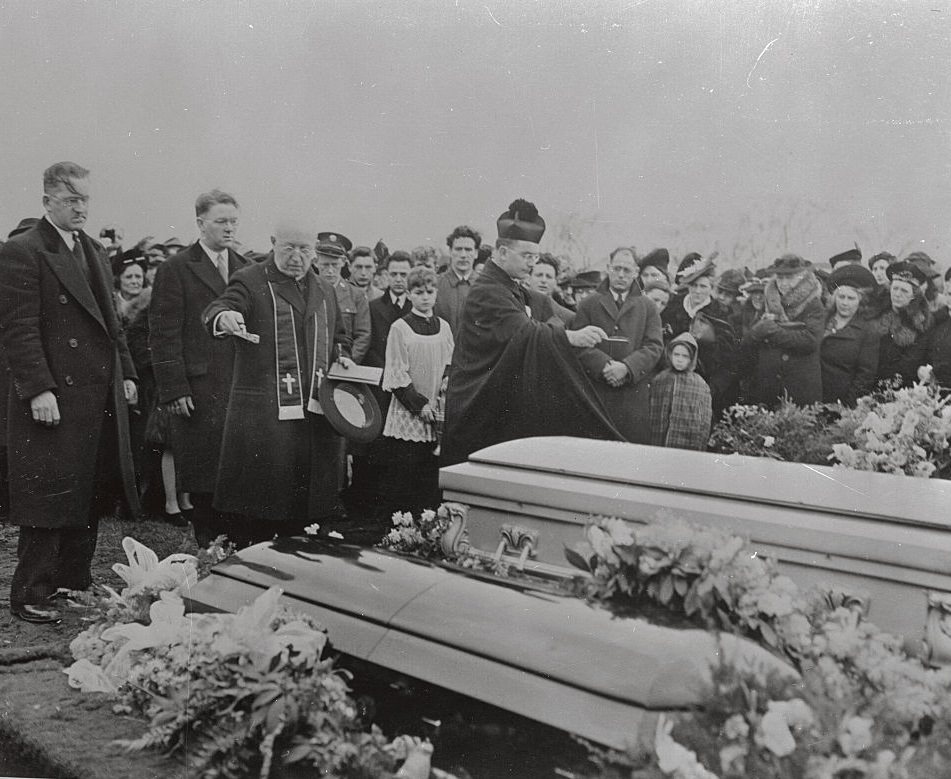
Tragedy marked the wedding day of John O'Neill when he, his bride, and his sister, Anna, who served as Maid of Honor only a few hours earlier perished in the disastrous Boston night club fire on November 28th. They were buried in a single grave at St. Joan's Cemetery yesterday, December 2.
#41 This photo was taken within half an hour before the tragic Cocoanut Grove fire by a photographer who escaped.
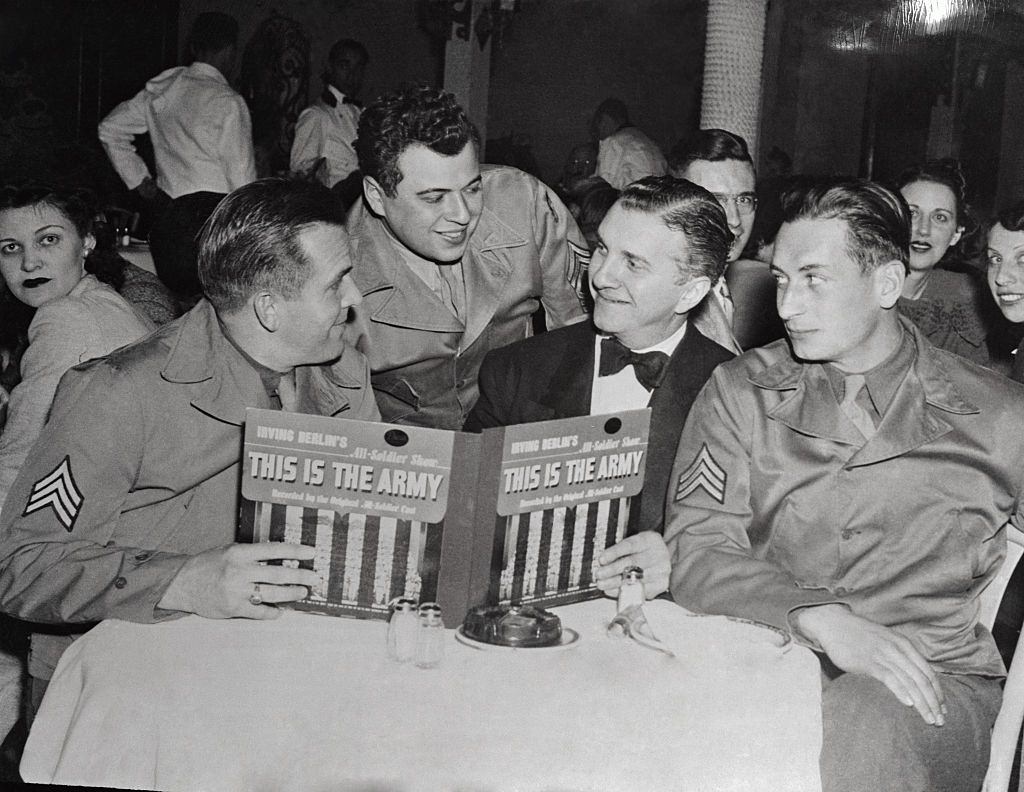
Mickey Alpert, master of ceremonies at the fatal night club, who fled the blaze uninjured, is sitting in the center of a group of soldiers from the play, "This is the Army", which was appearing in Boston at the time. Peering over Alpert's shoulder is Sgt. Ezra Stone, of radio, screen, and stage fame. All of the soldiers left before the tragedy.
#42 Cocoanut Grove Night Club owners in Automobile.
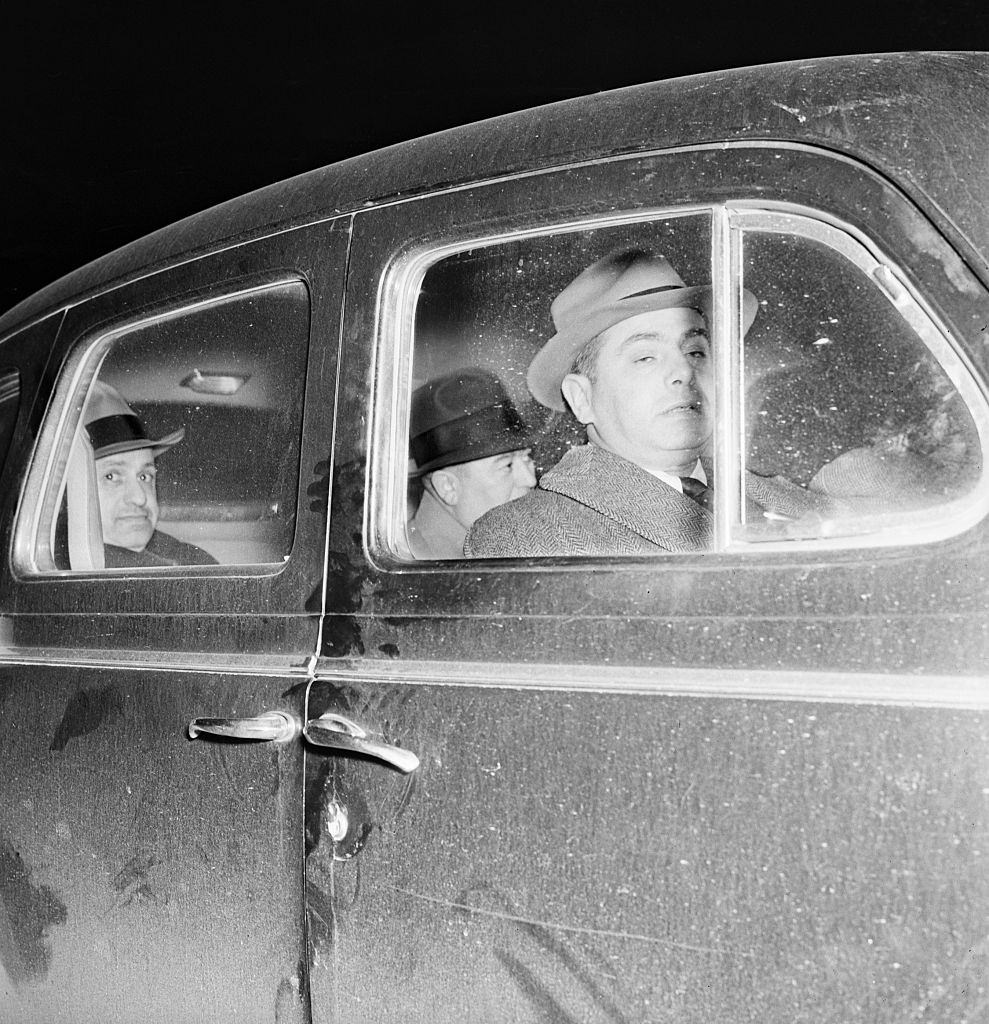
Among the ten men indicted yesterday in connection with the Cocoanut Grove fire was James Welansky (l), who with his brother, Barnett Welansky (extreme right) owned and operated the night club, and Jacob Goldfine (center), who worked as a steward at the Grove. They are shown as they left state police headquarters on bail after being arrested. They will be tried in Boston beginning next Monday, together with four Boston City officials and other indicted men.


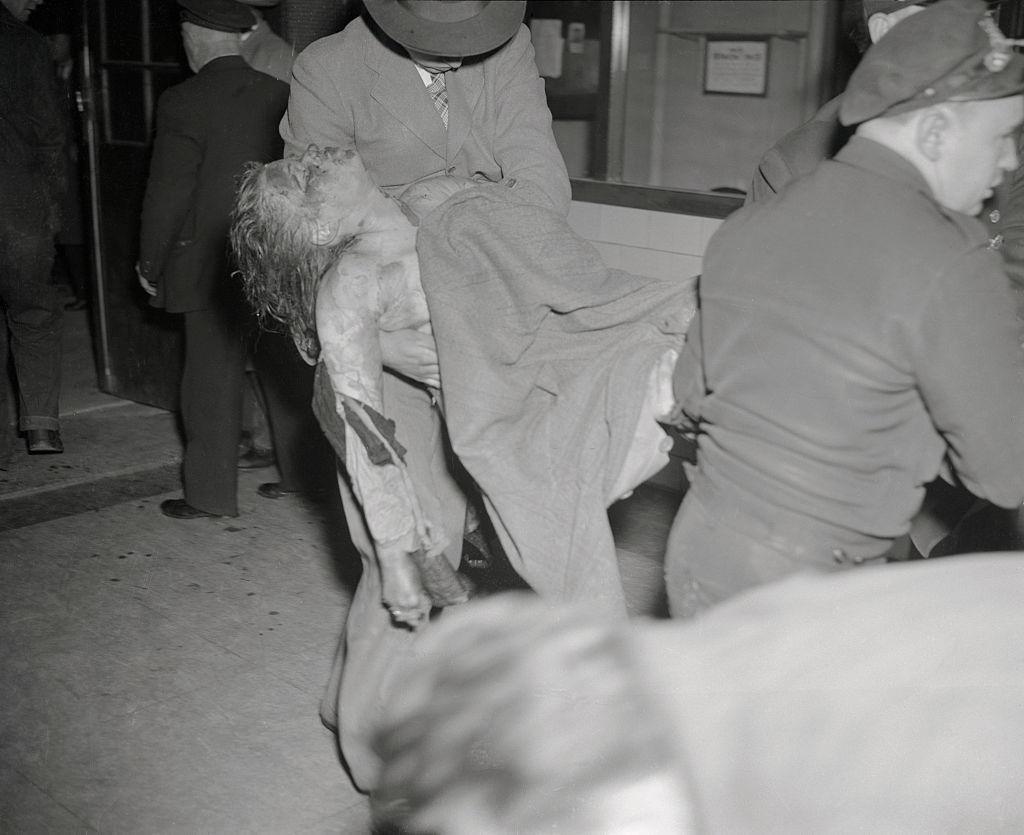
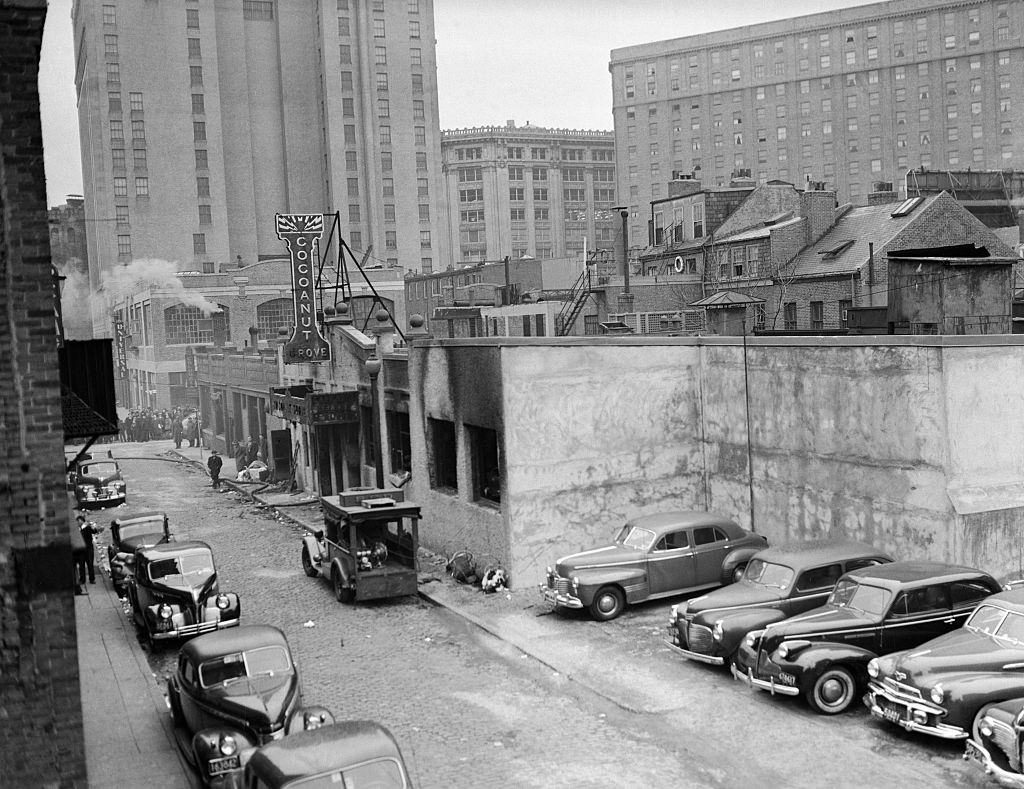
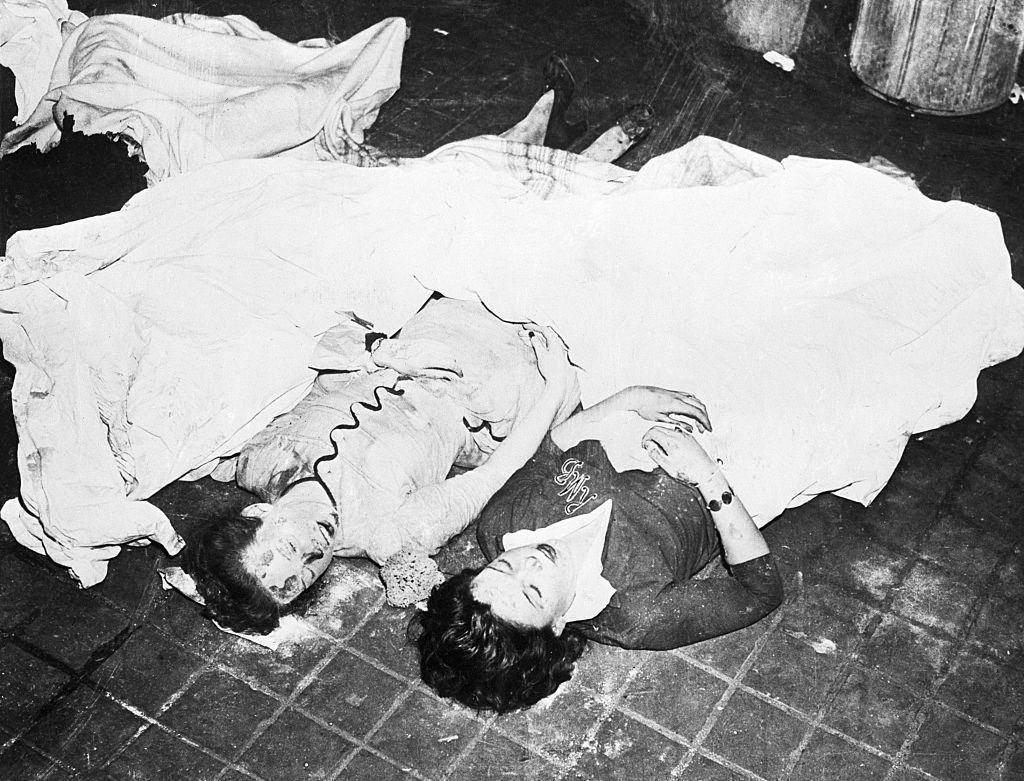
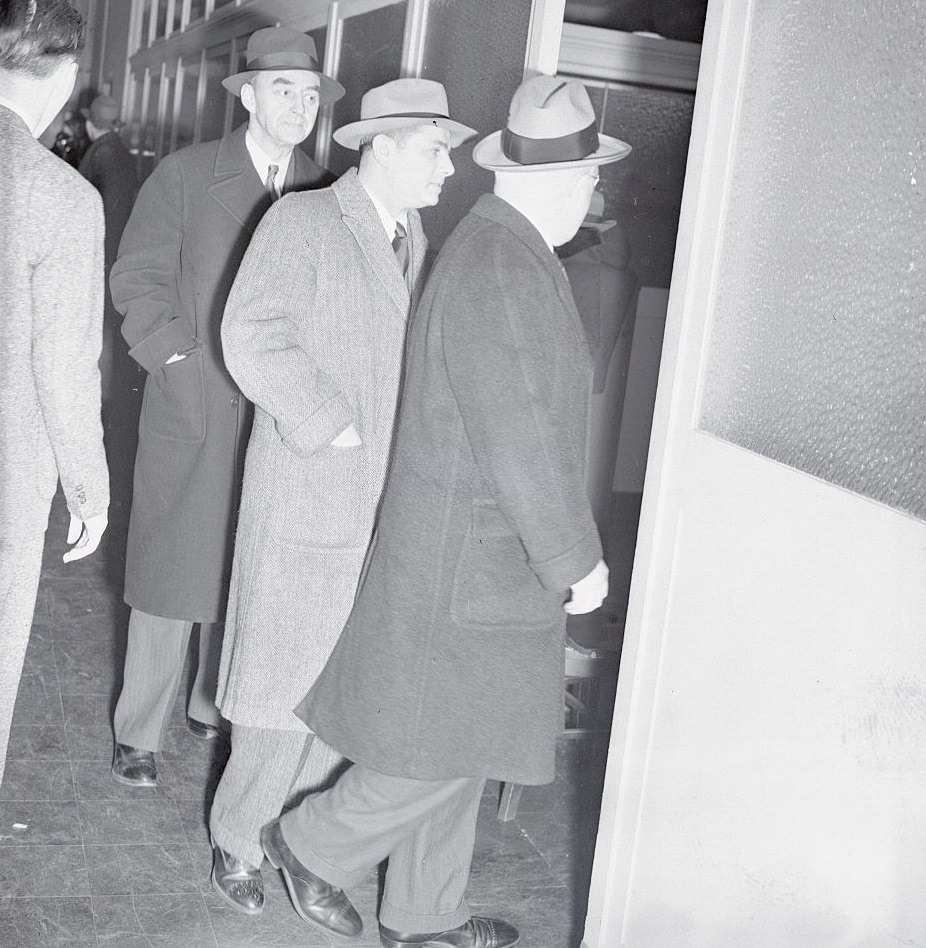
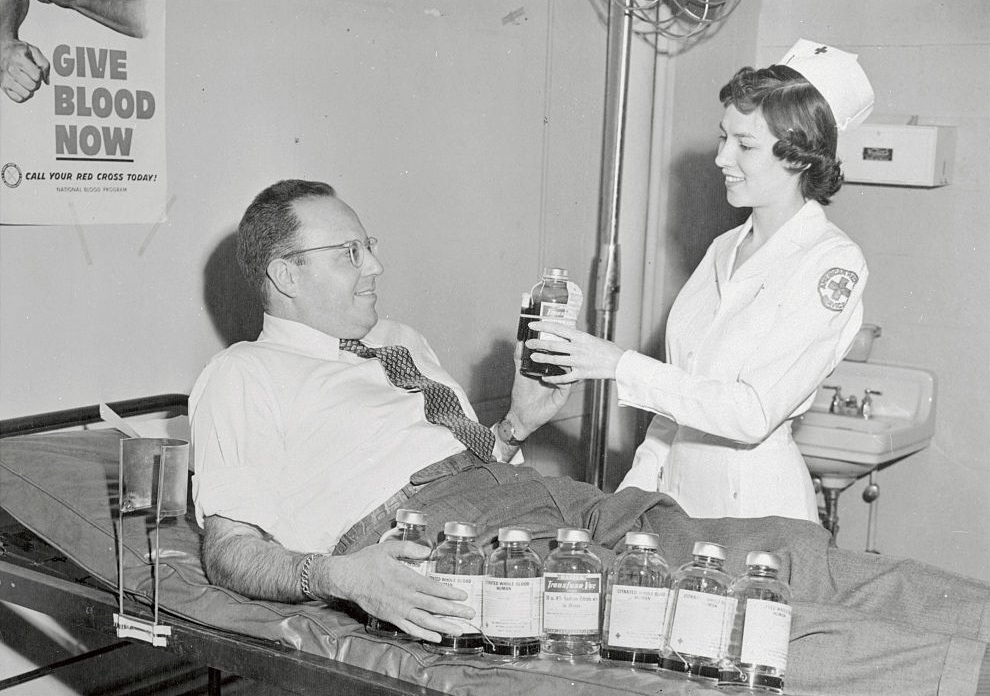
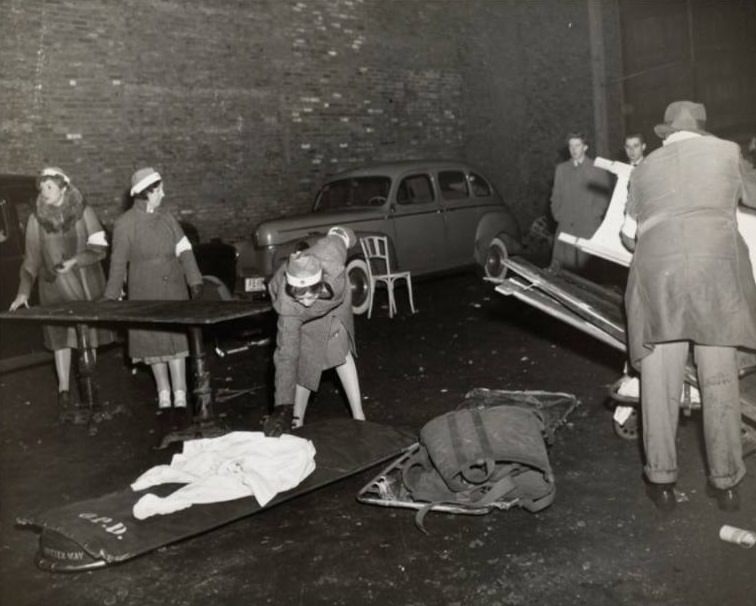
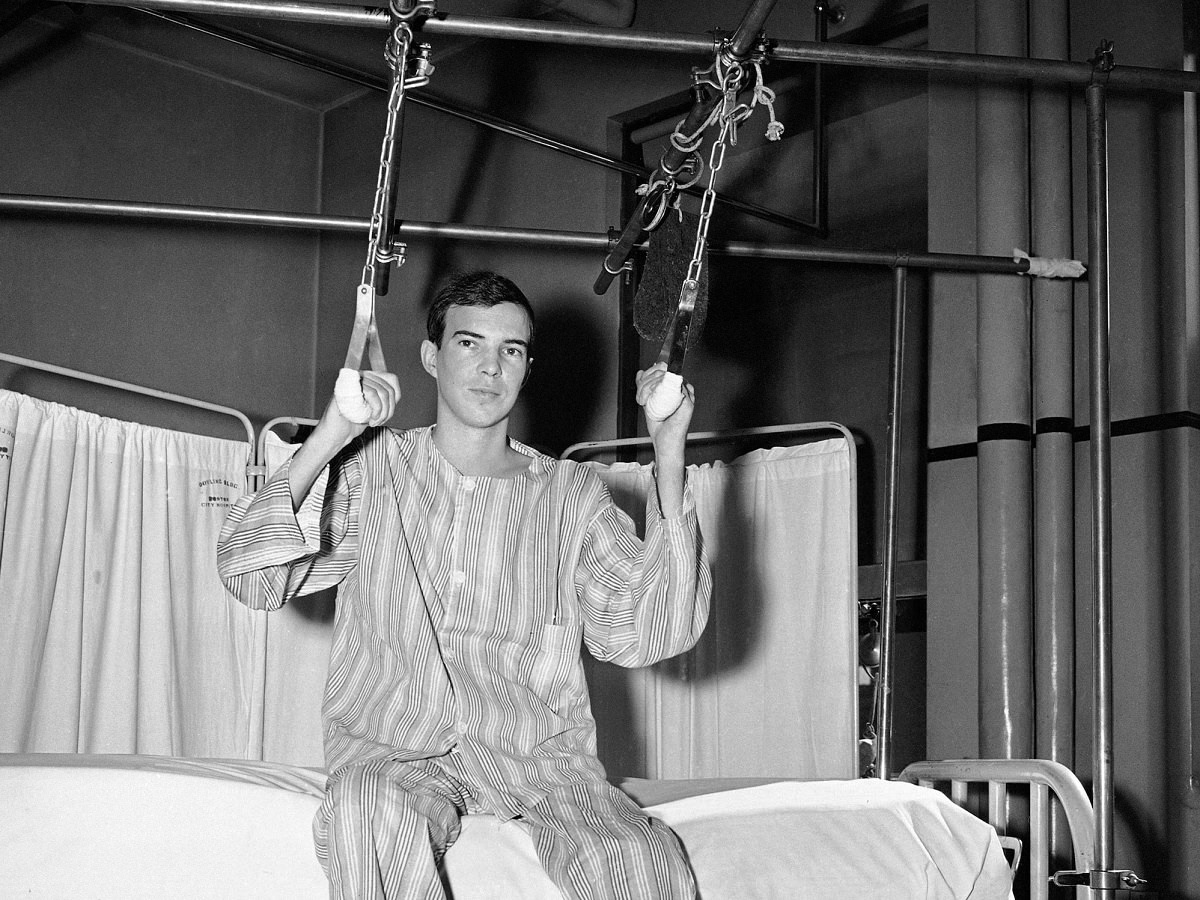
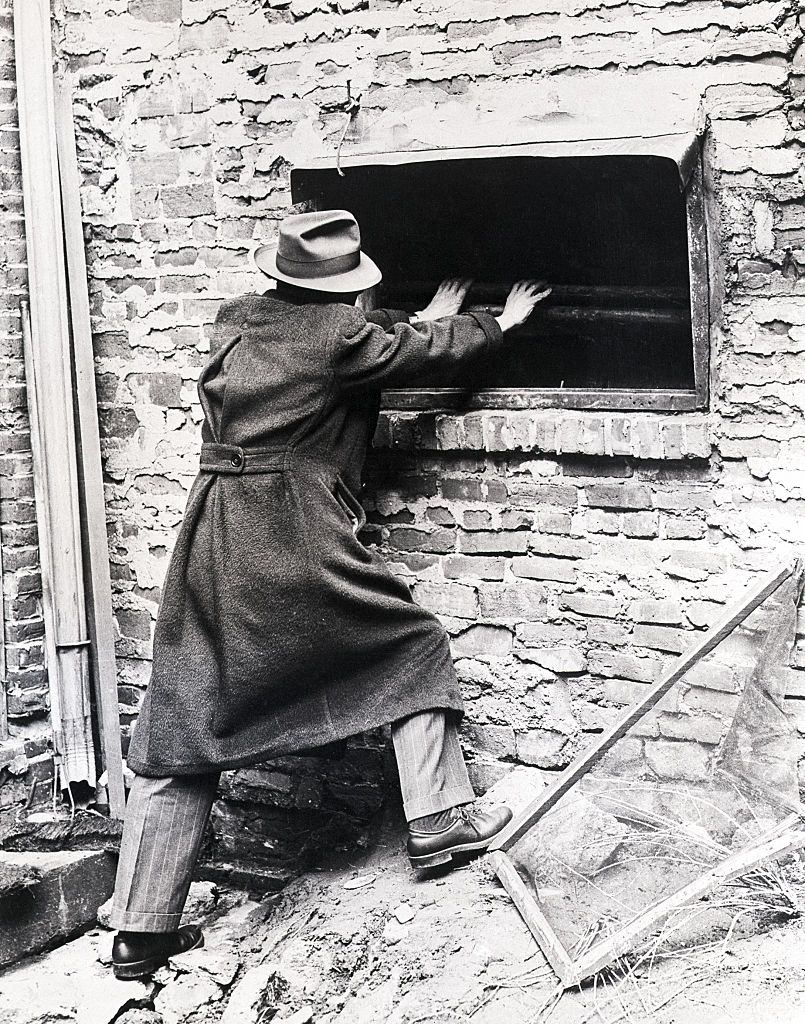
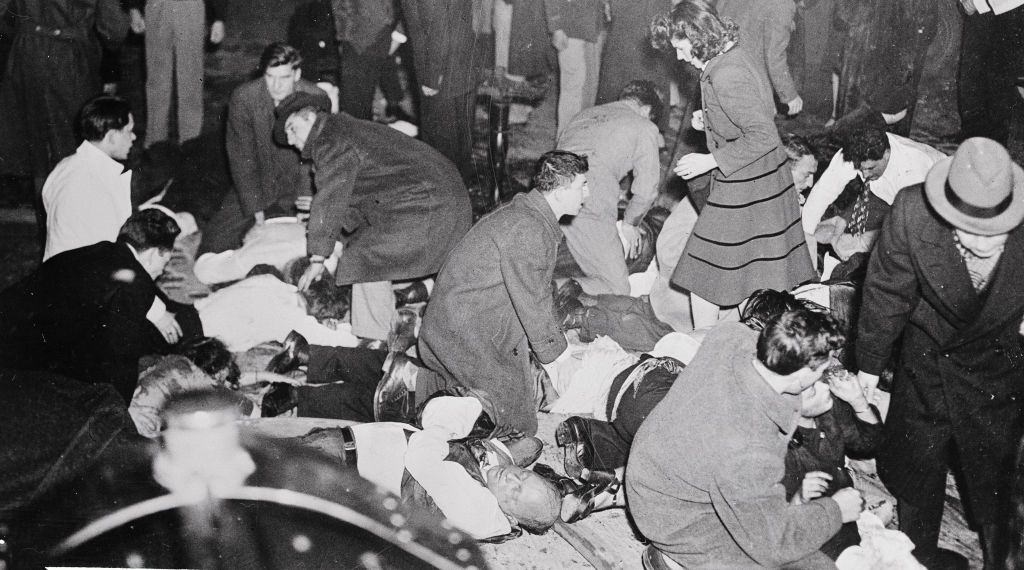
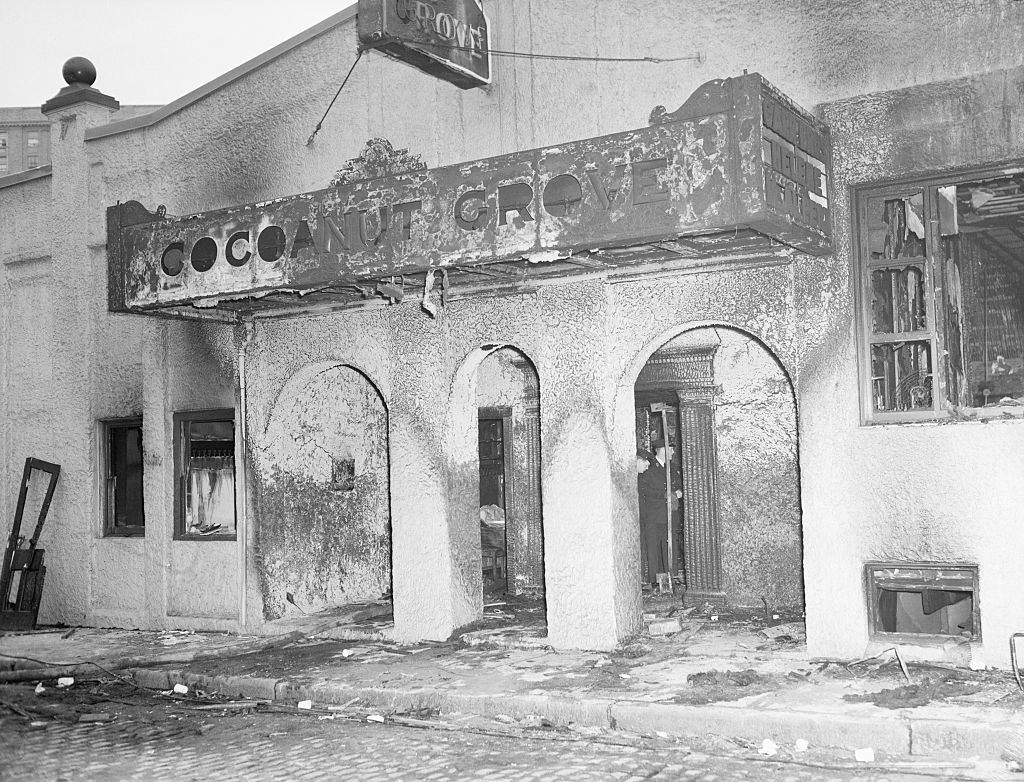
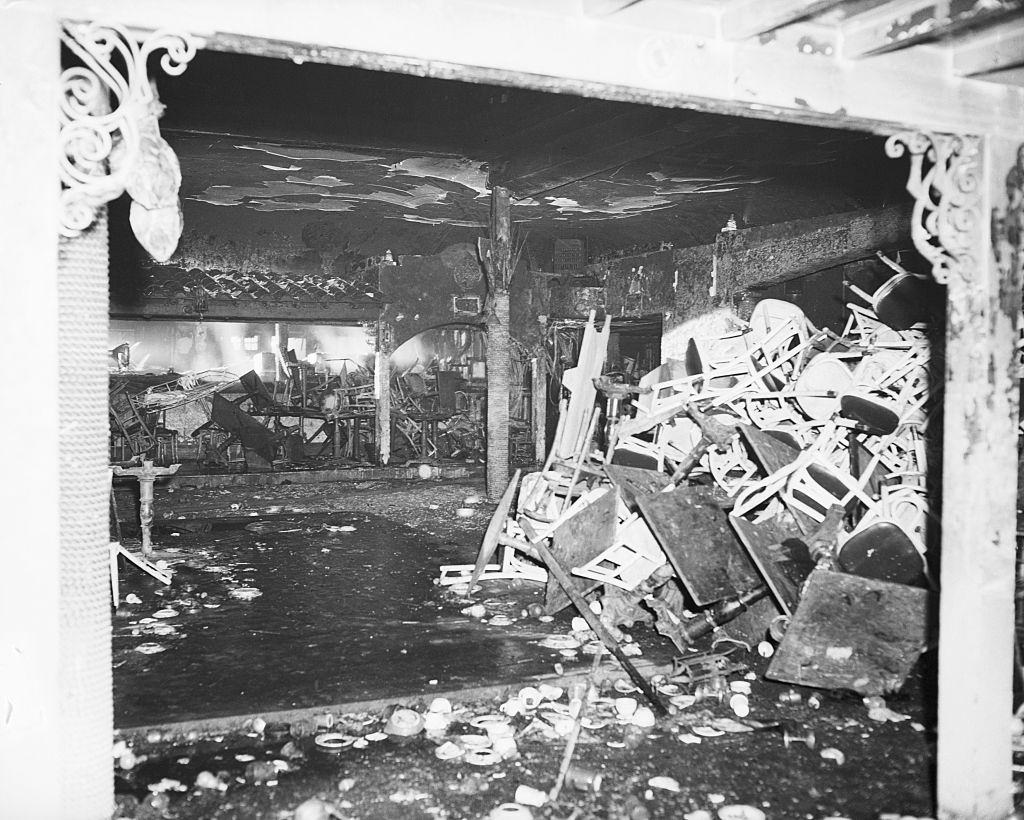
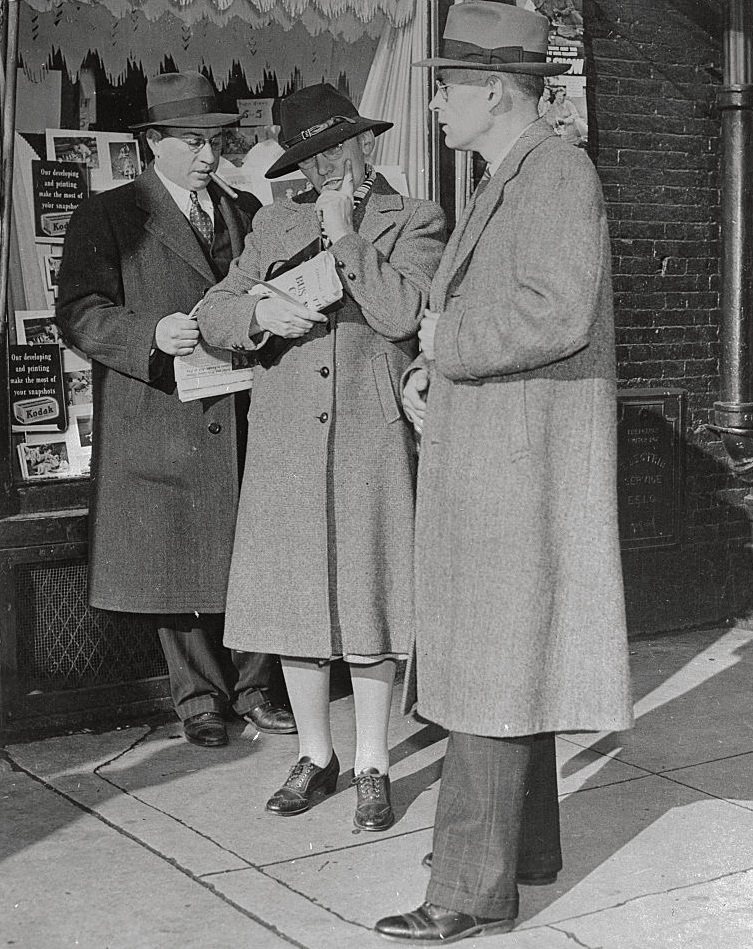
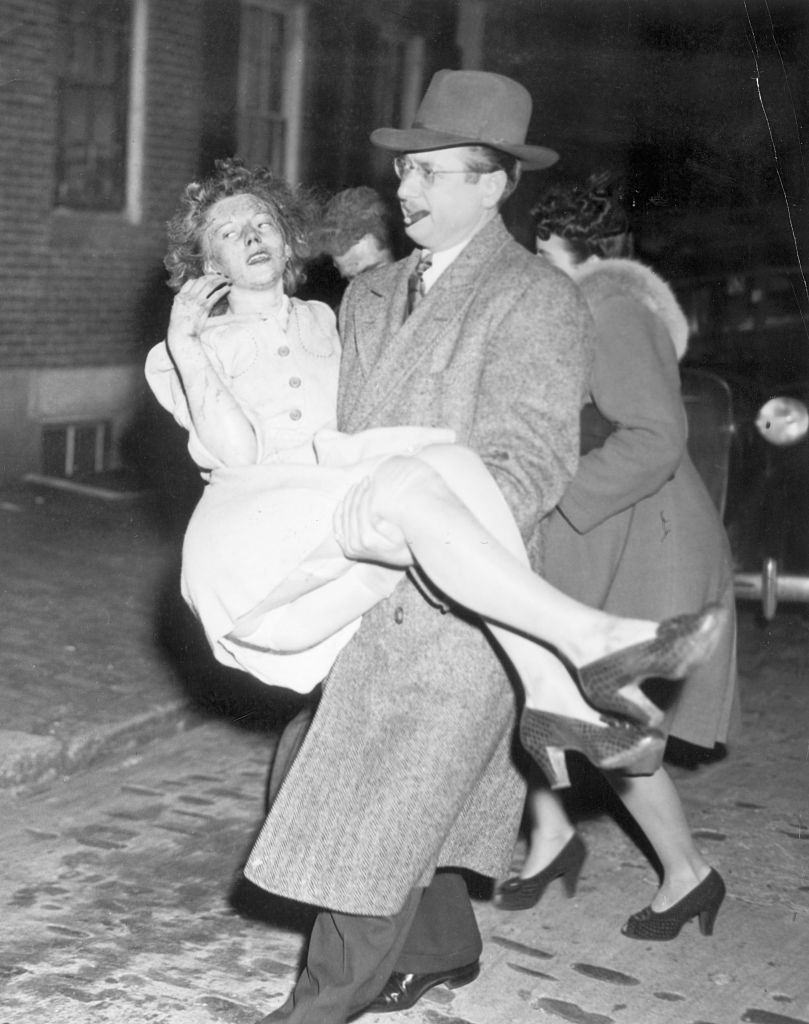
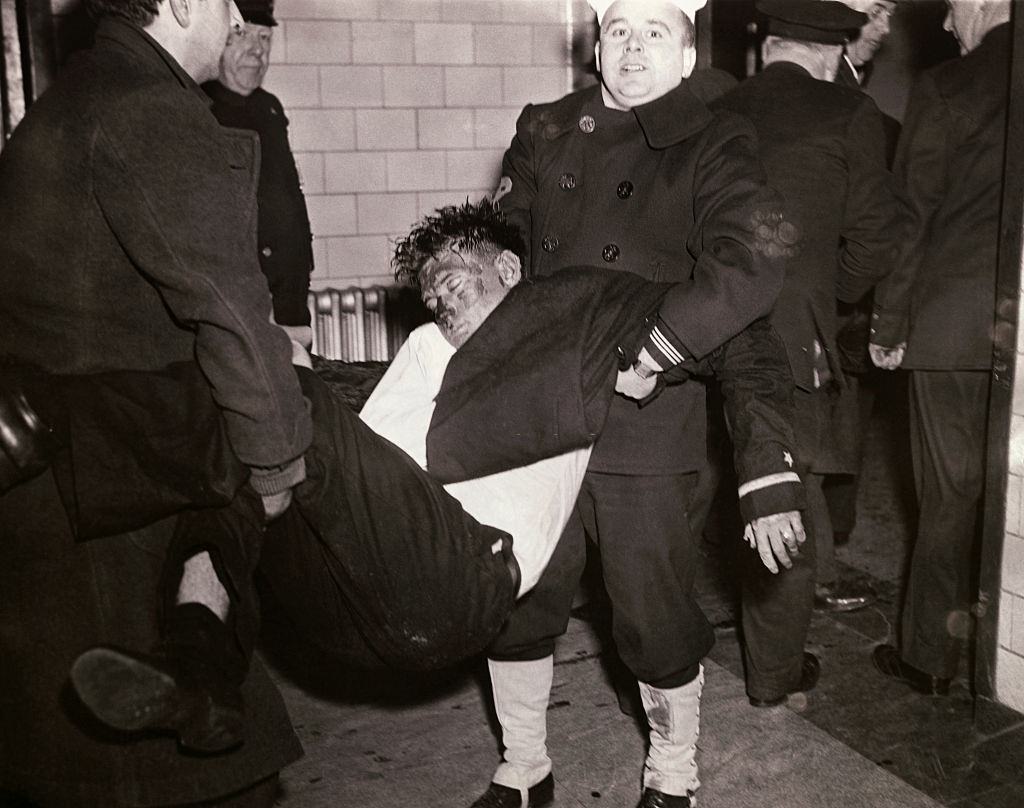
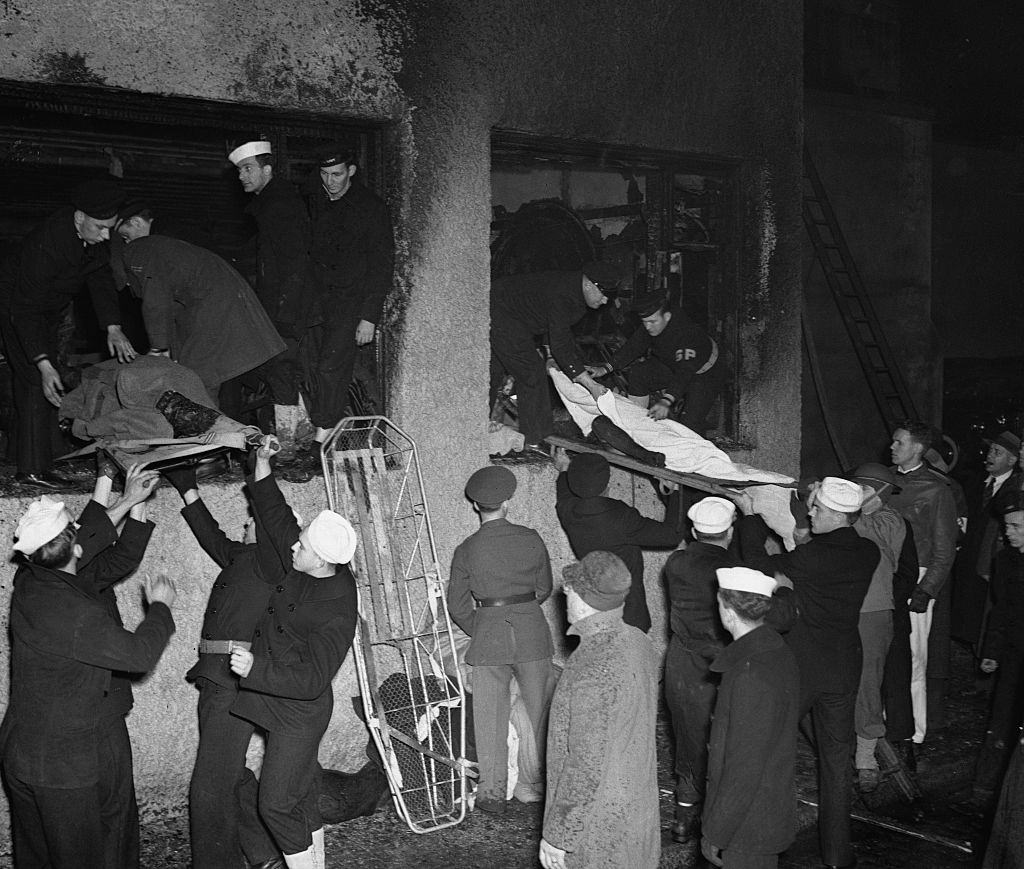
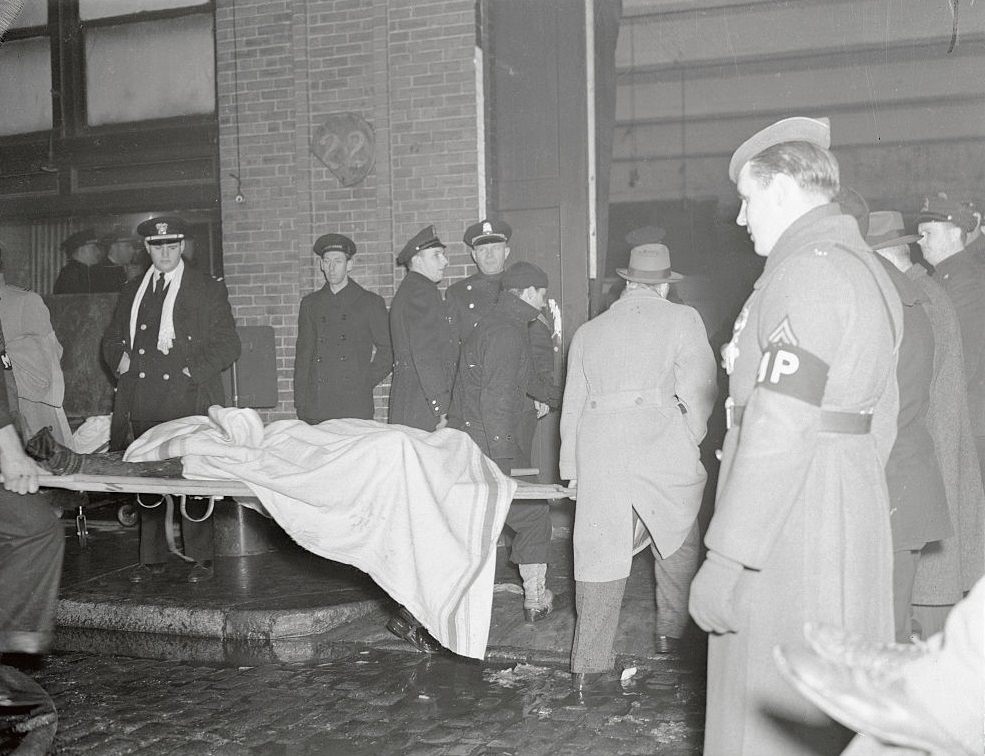
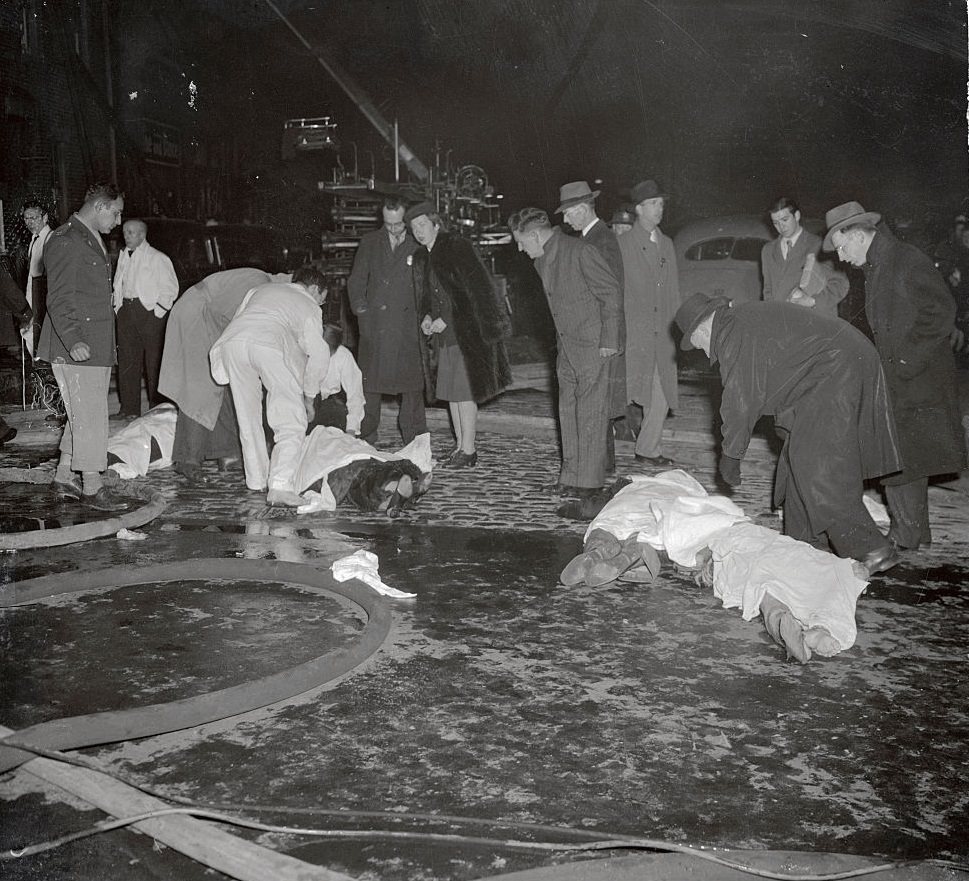
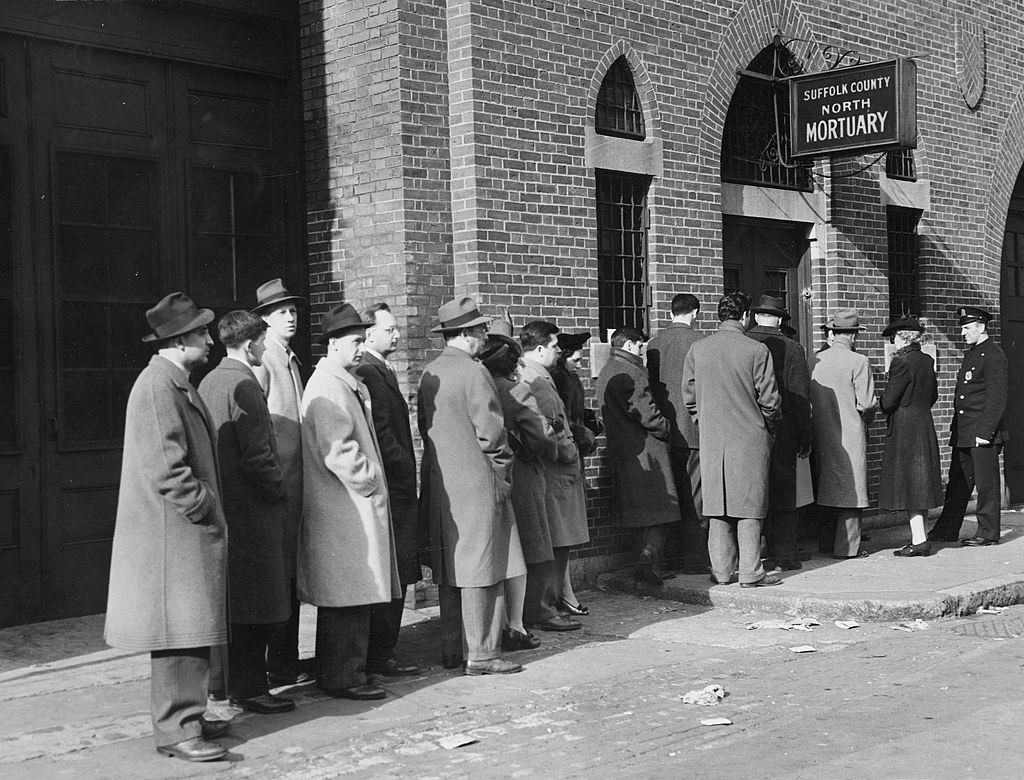
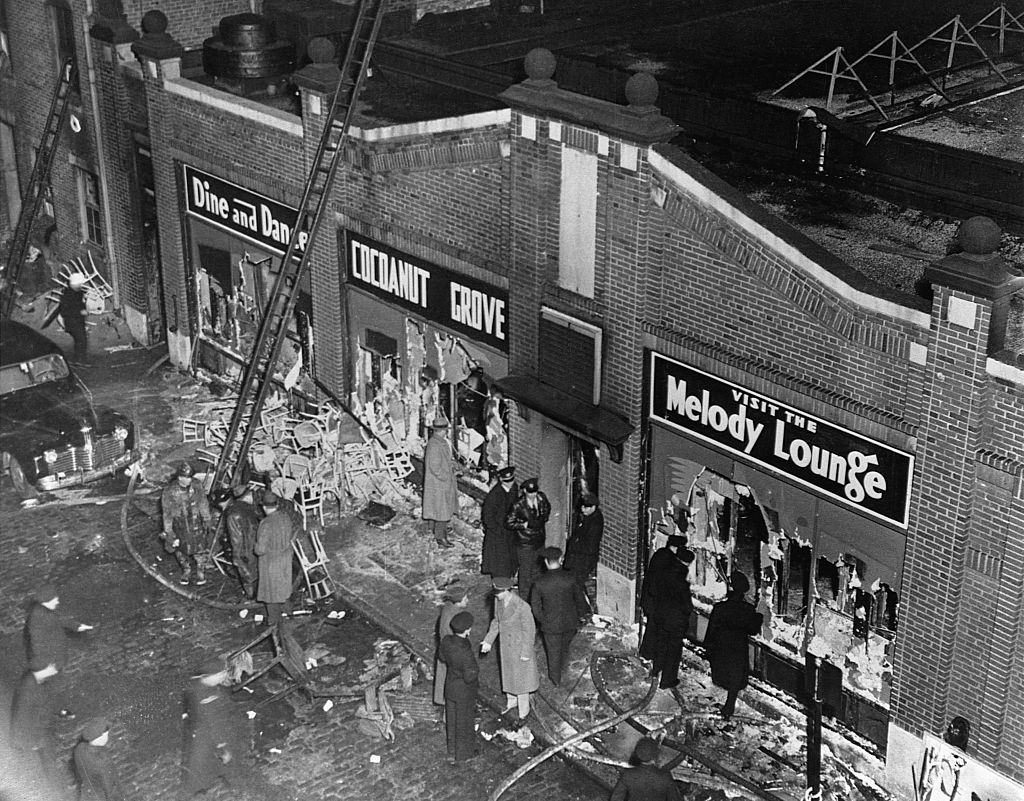
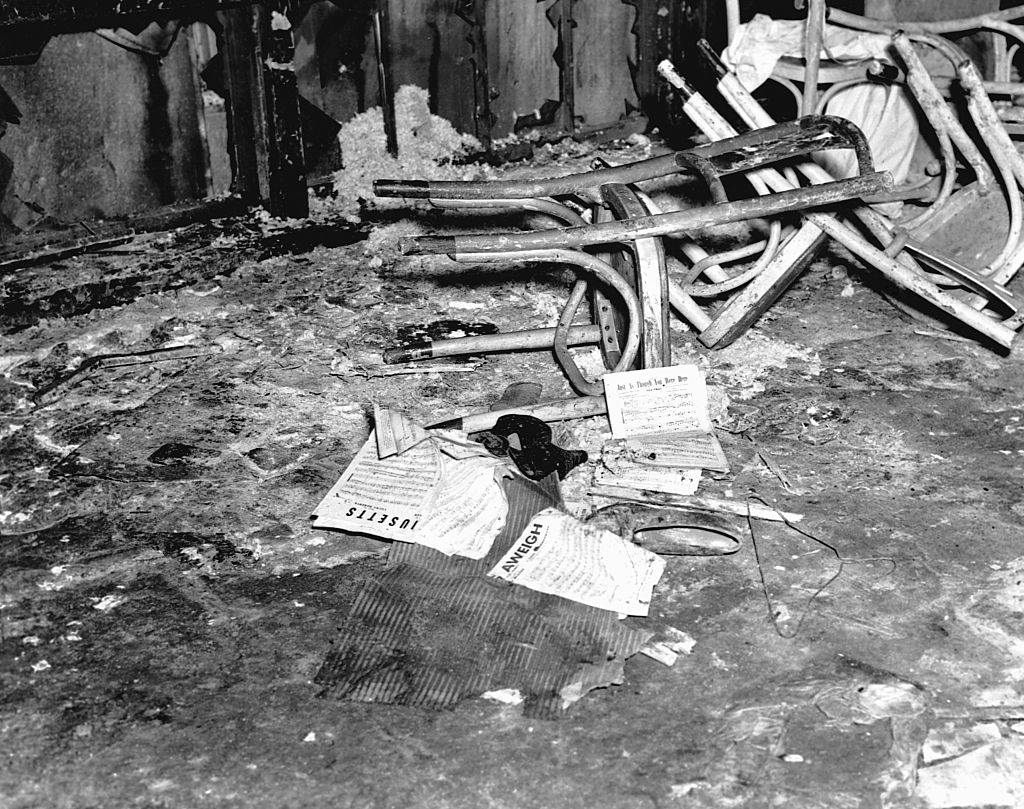
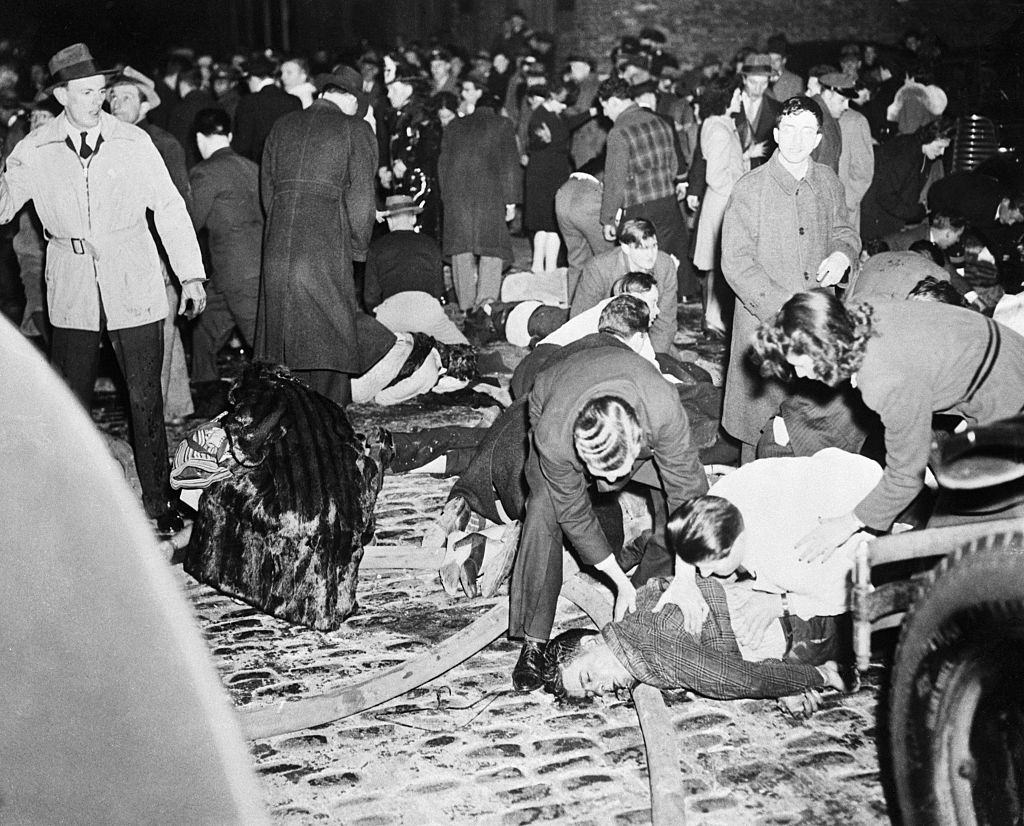
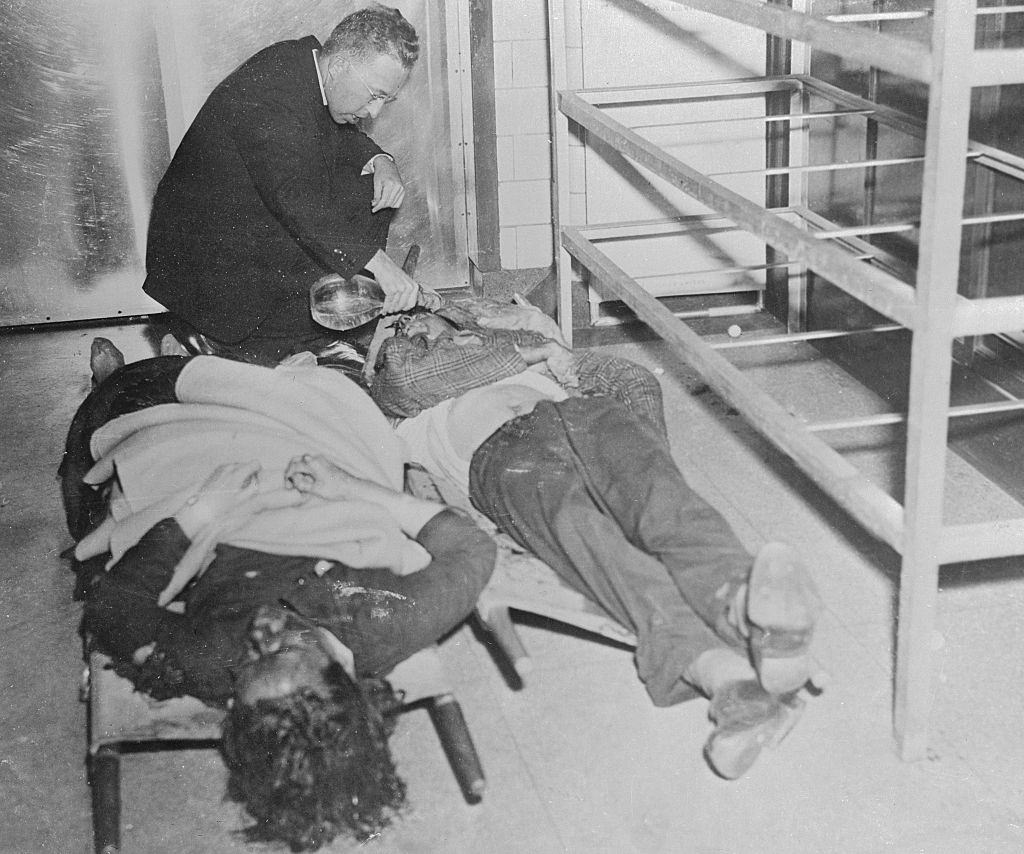
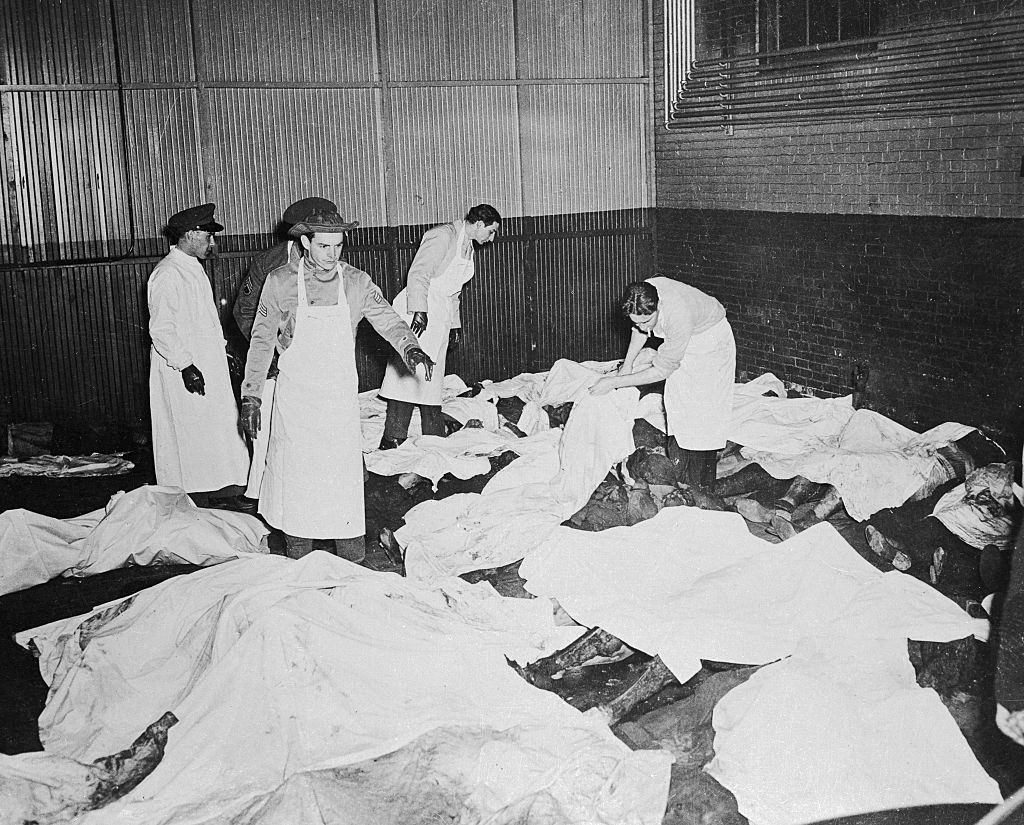
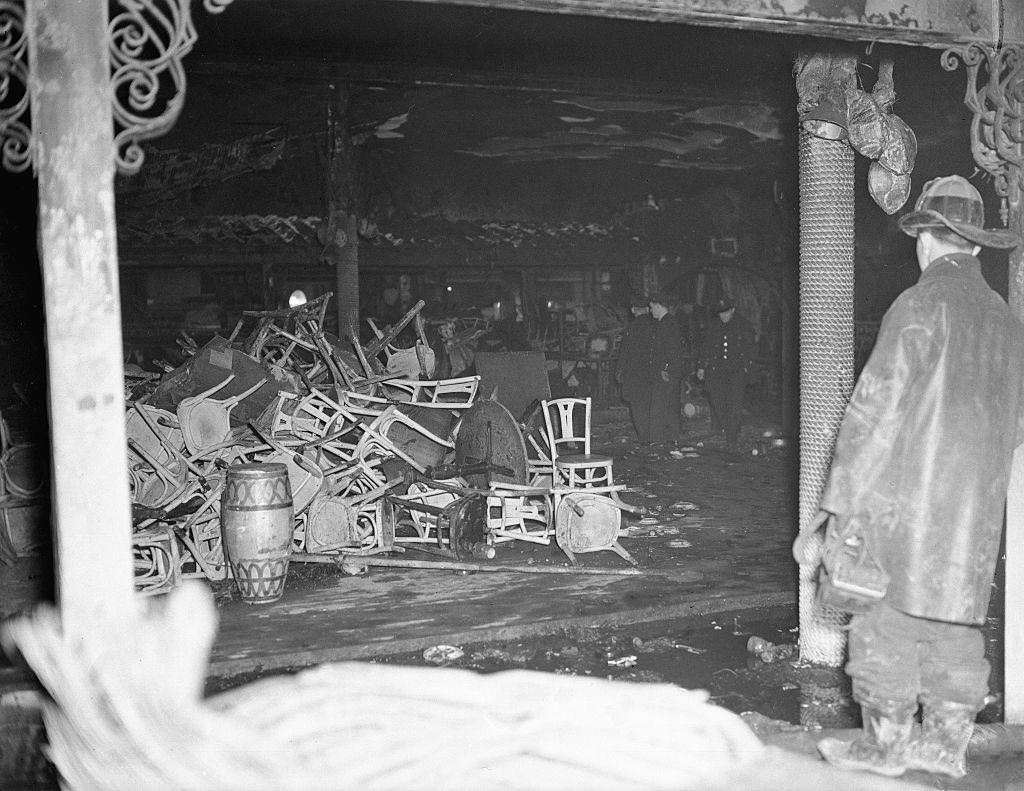
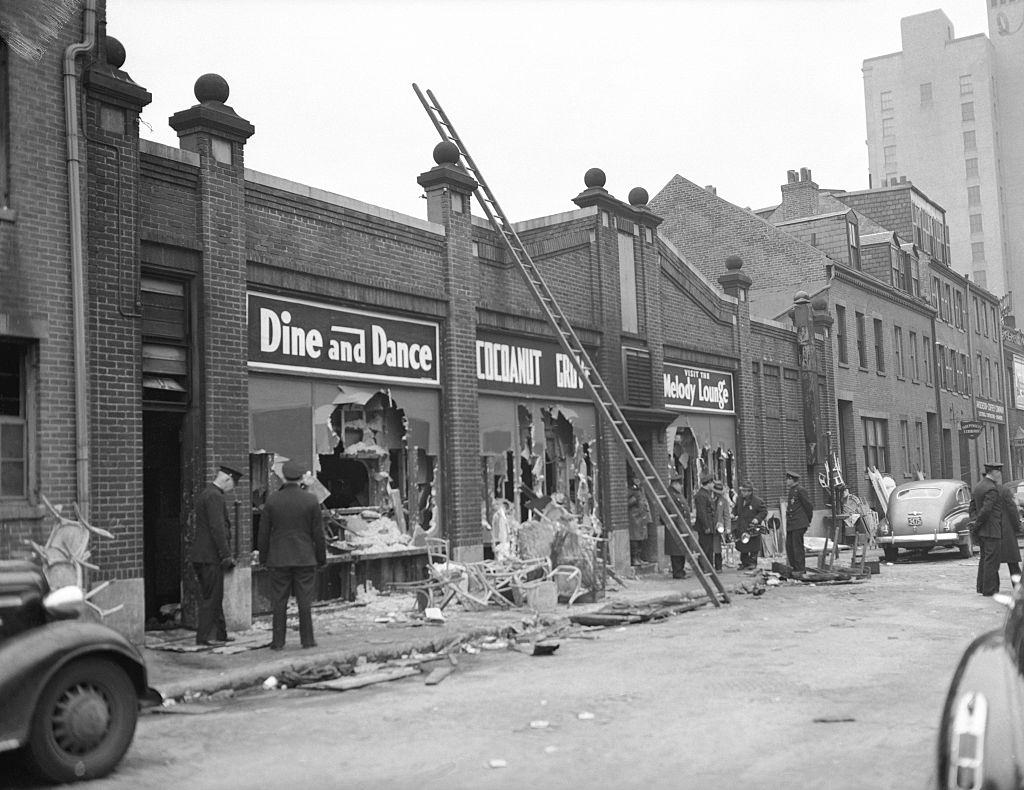
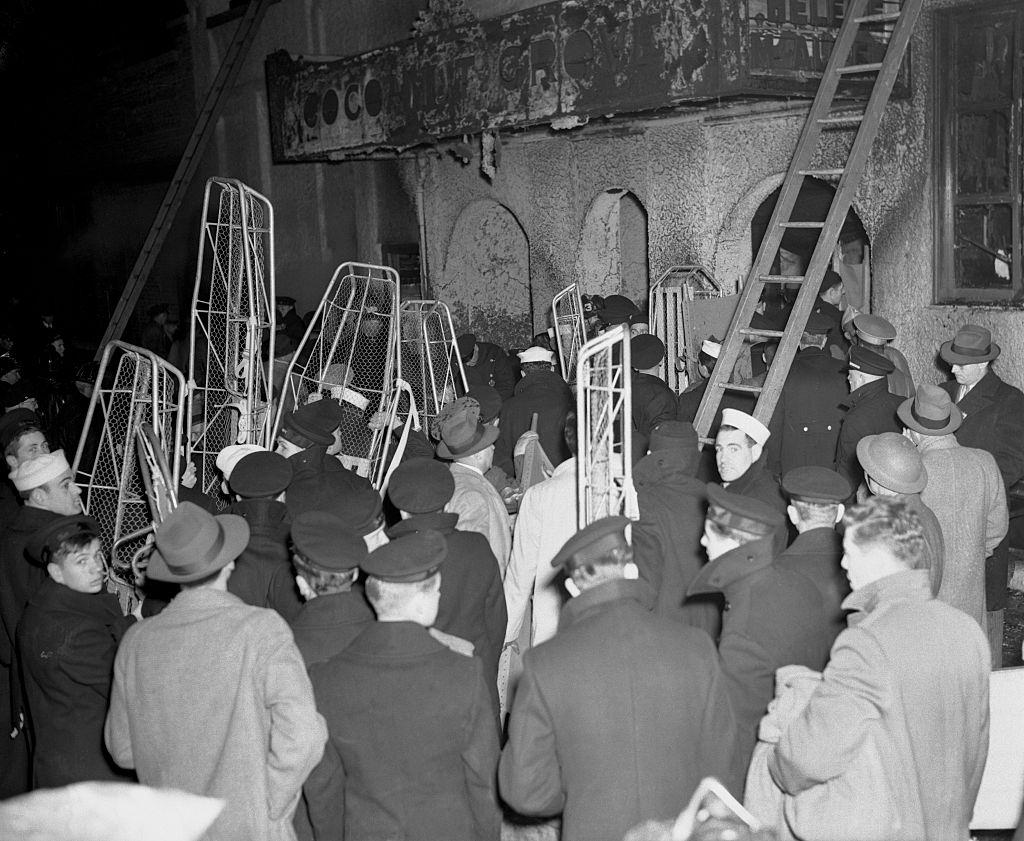
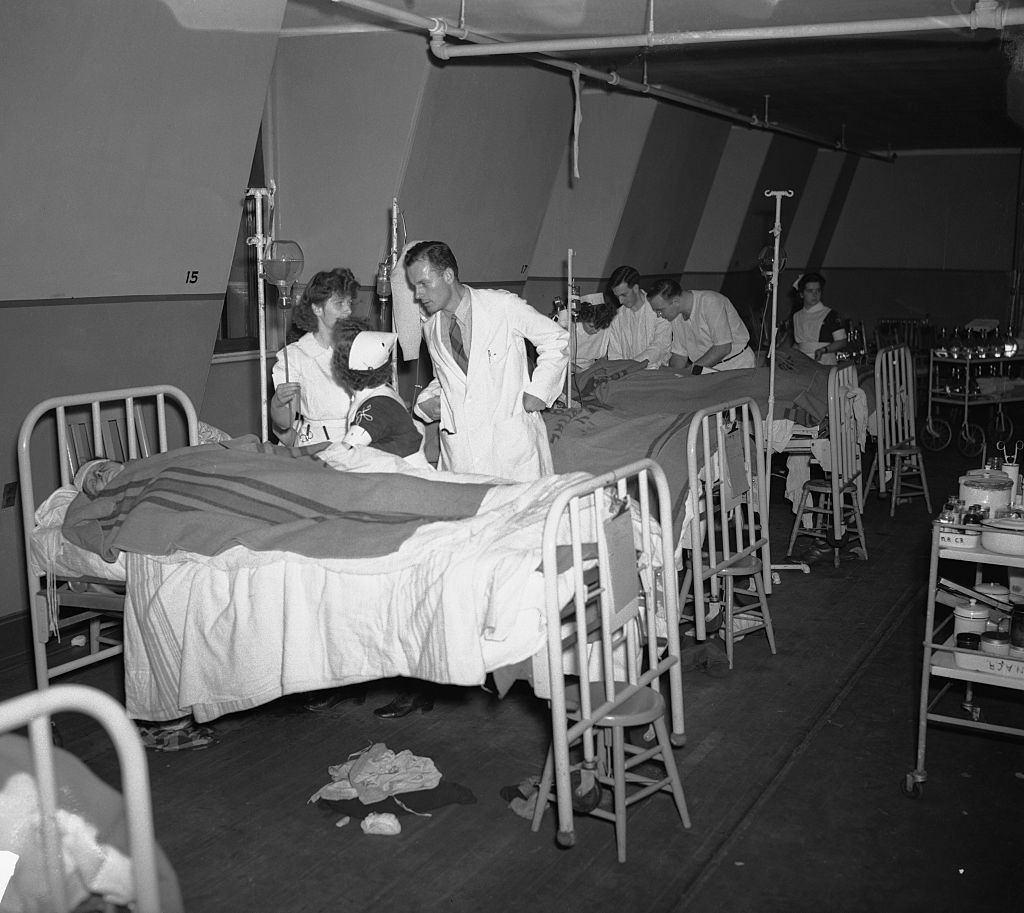
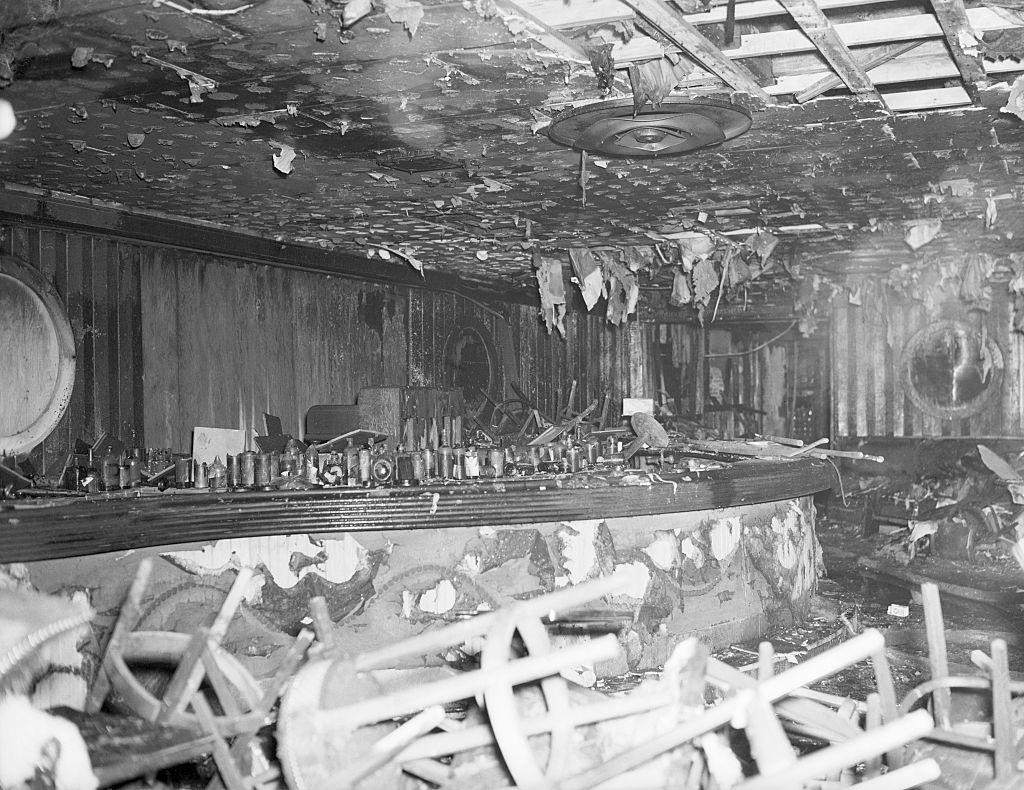
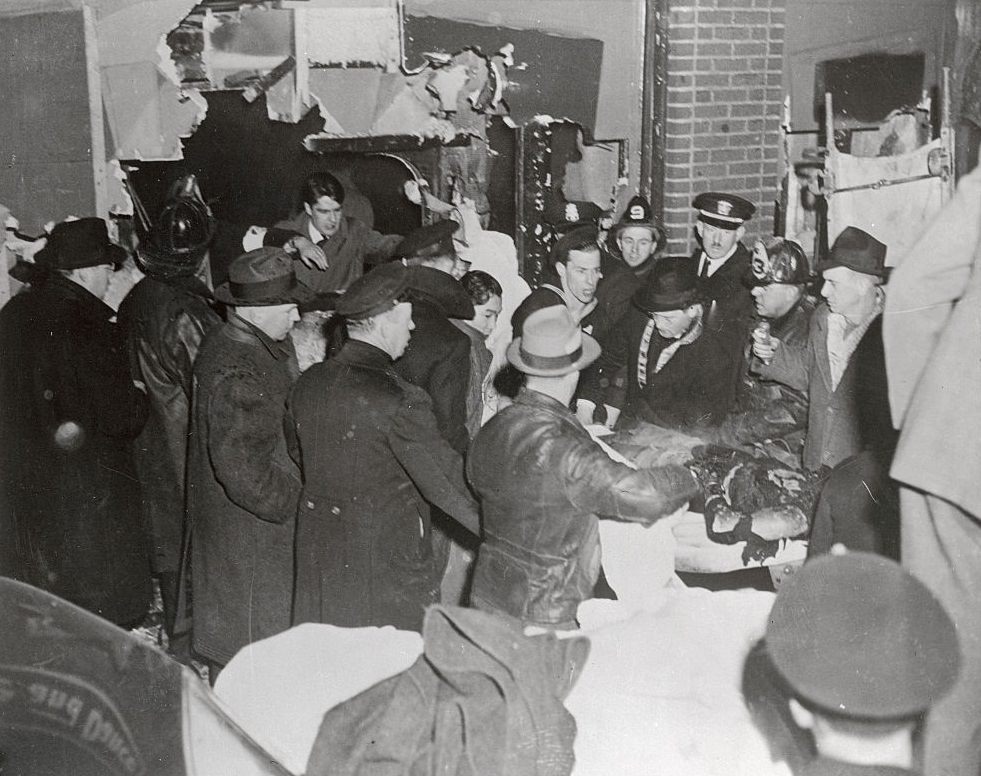
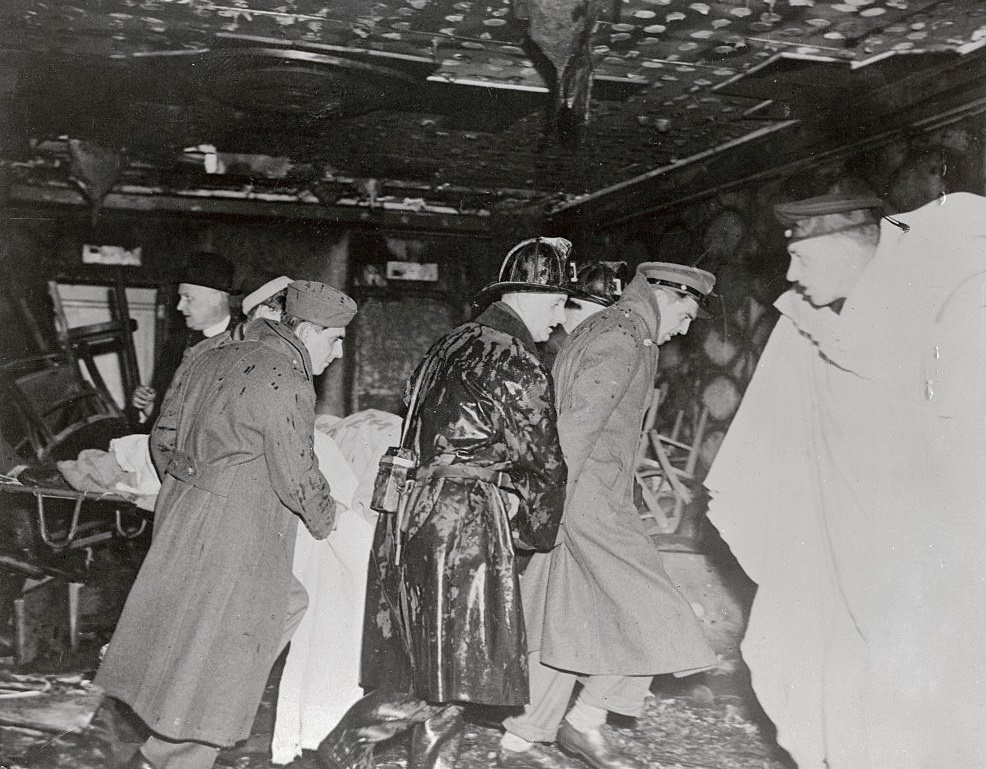
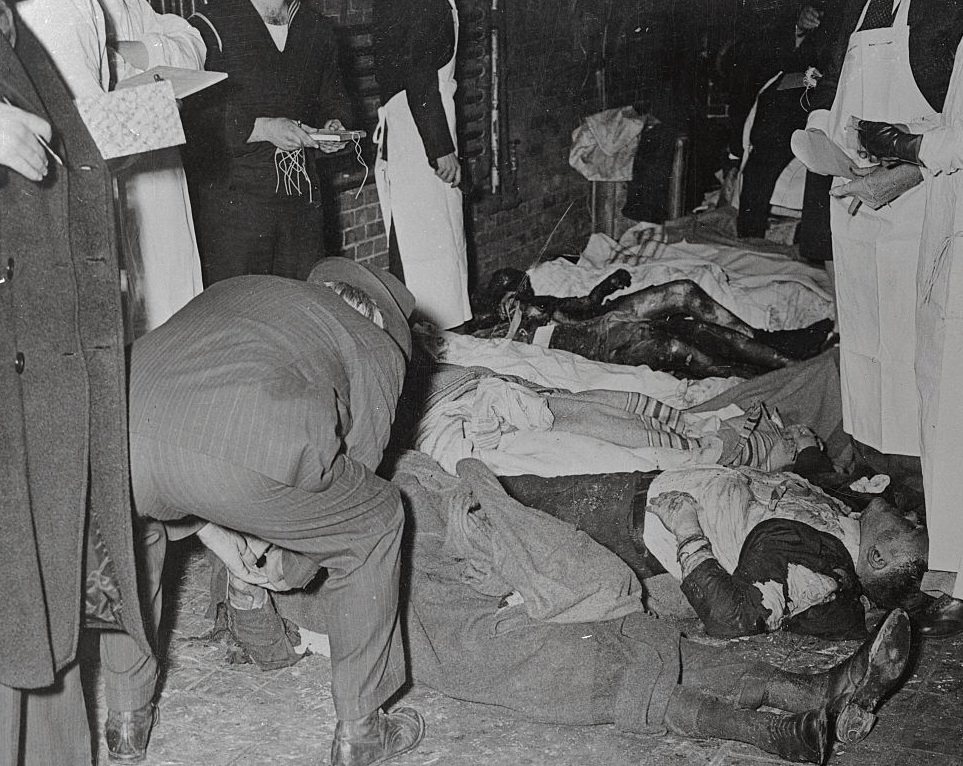
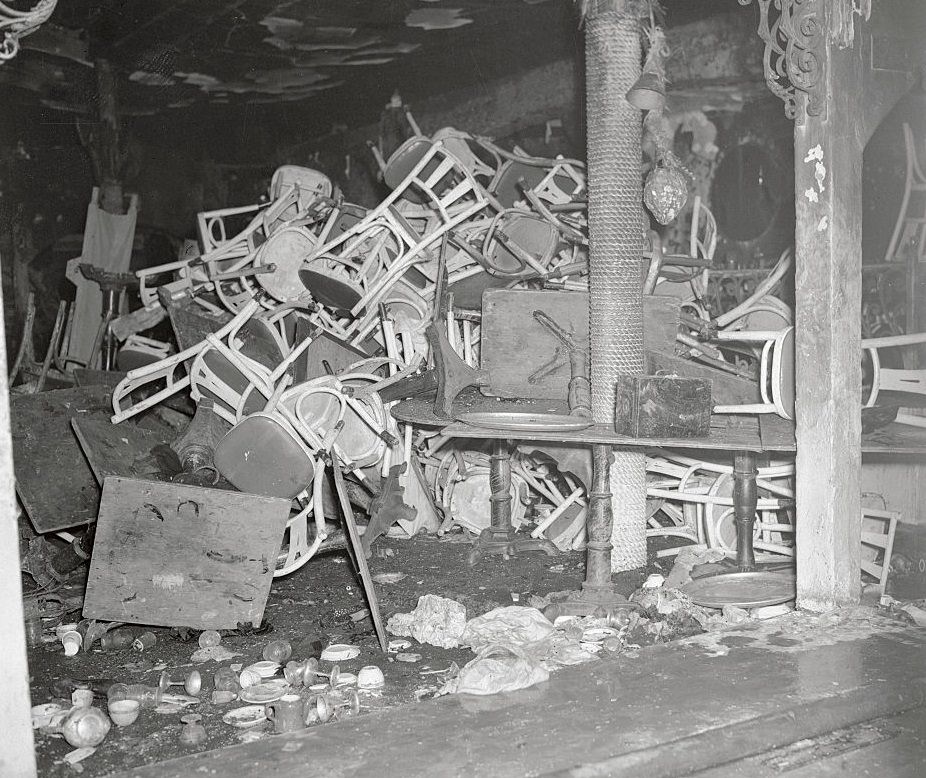
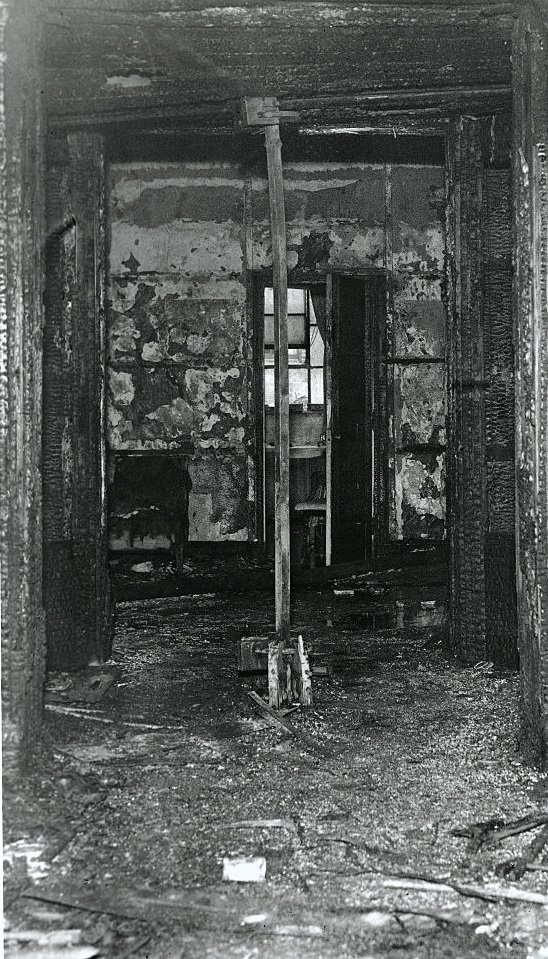
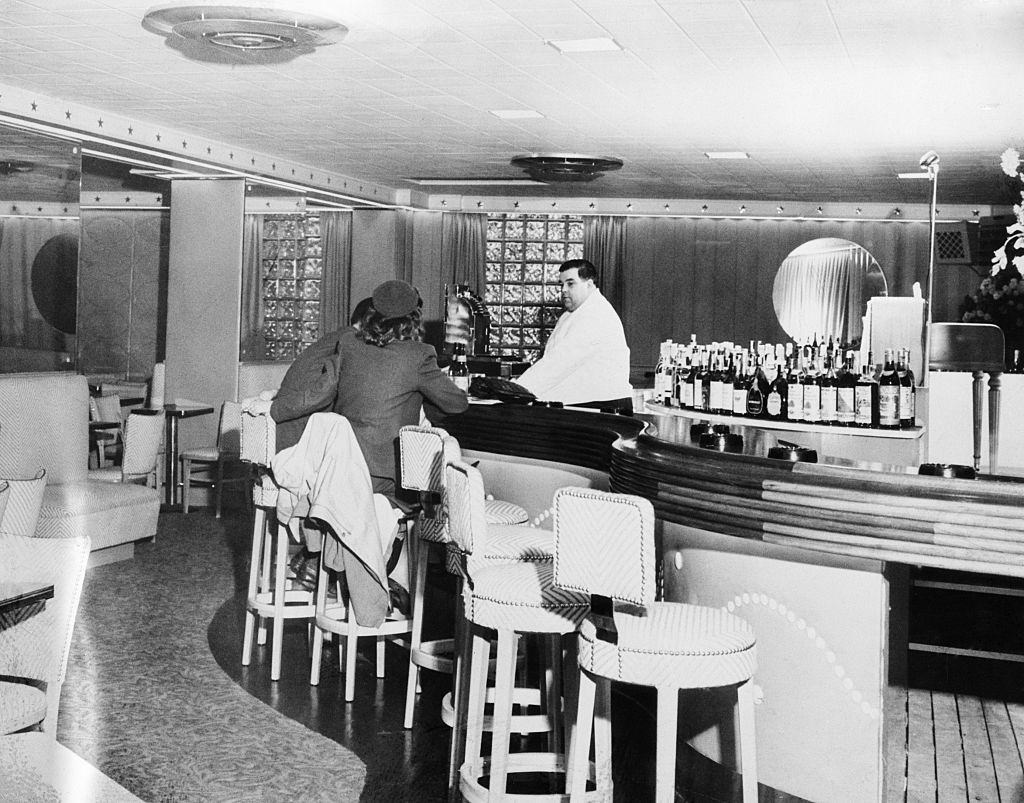
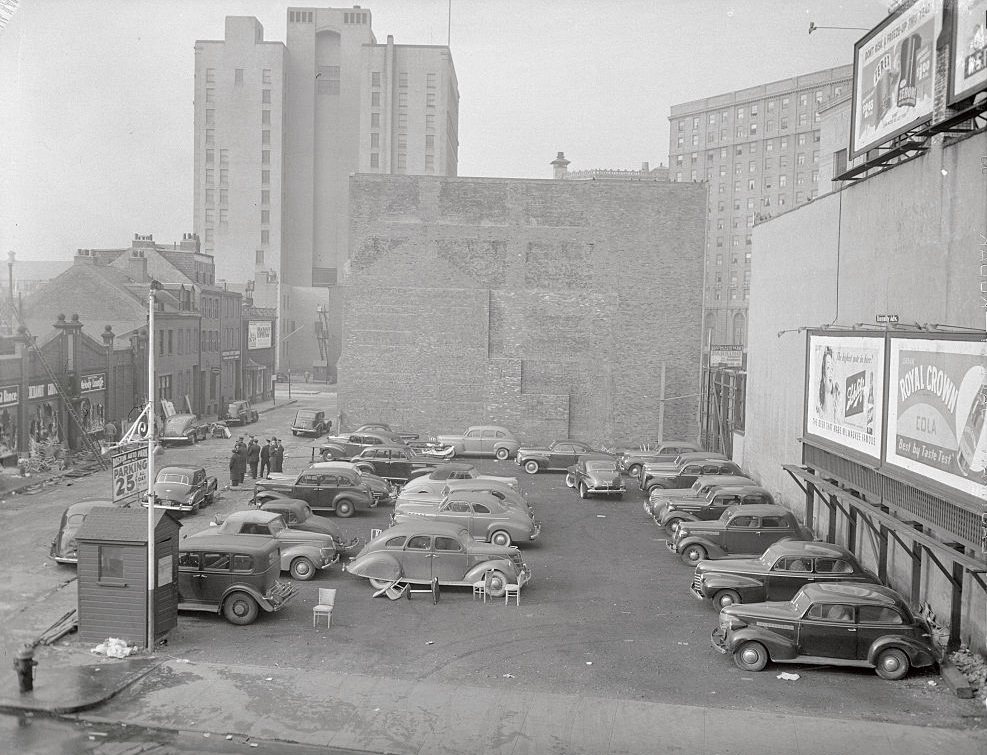
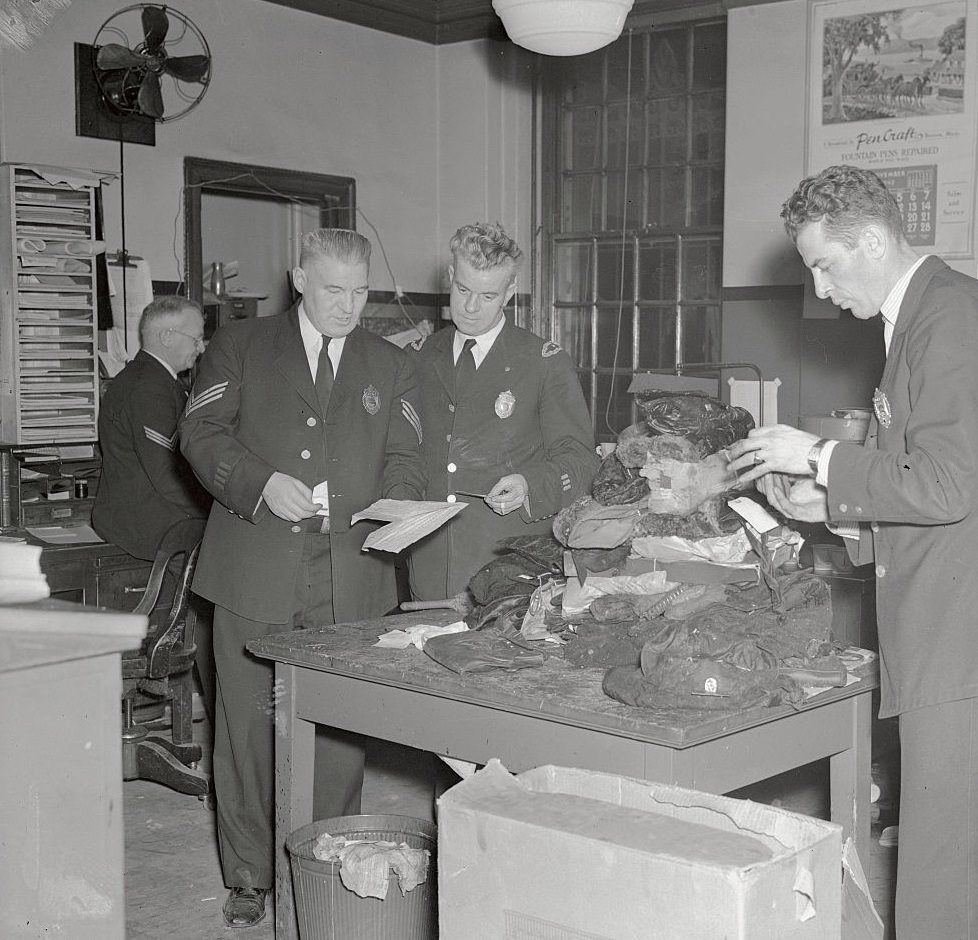
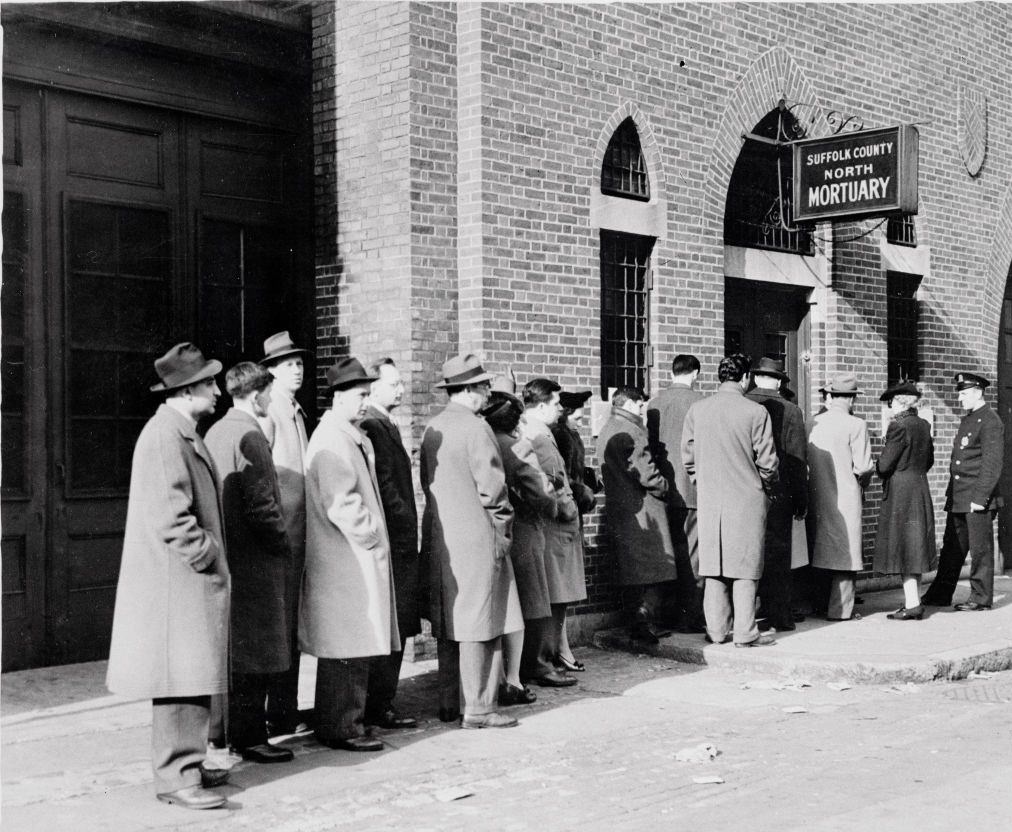
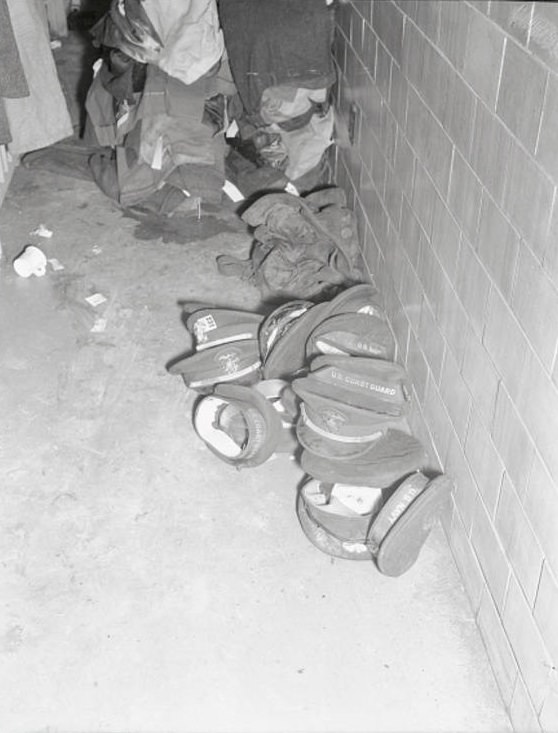
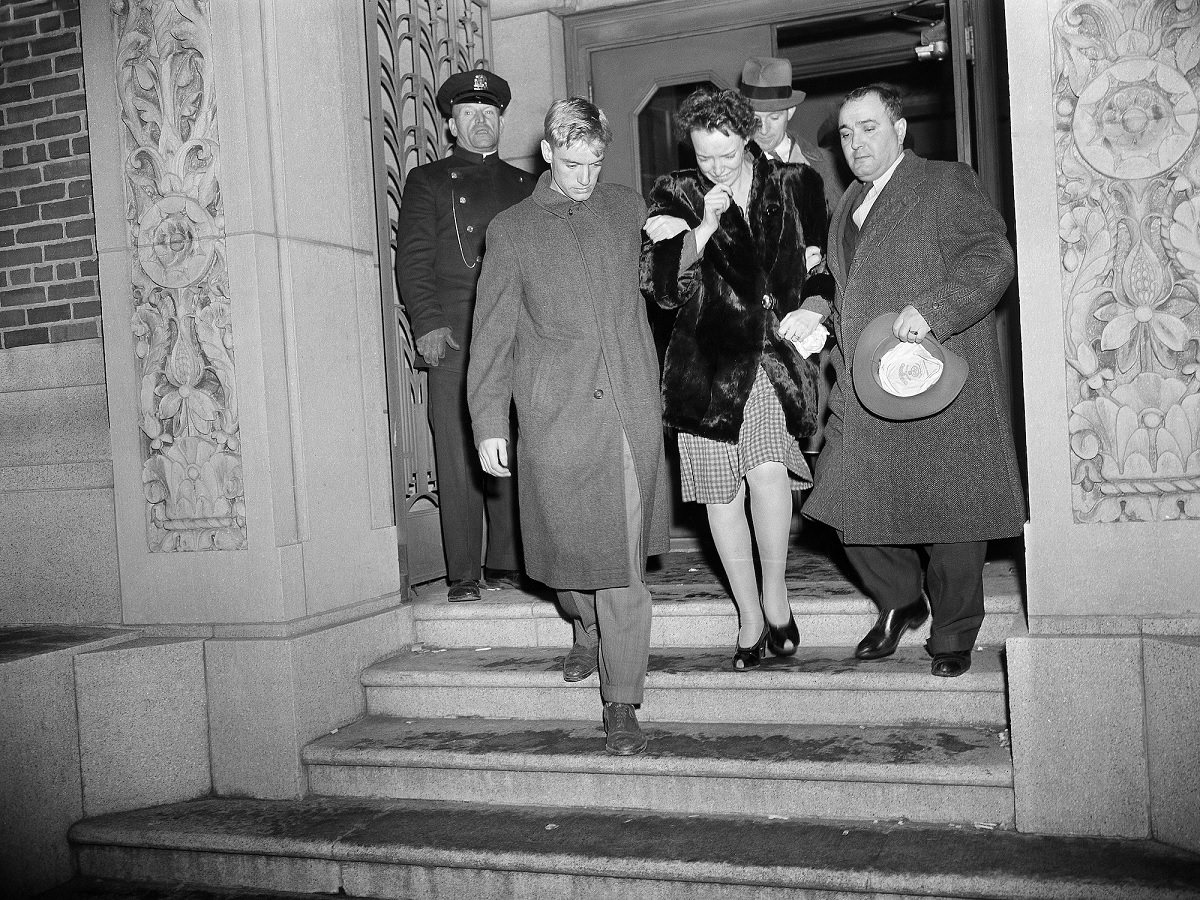
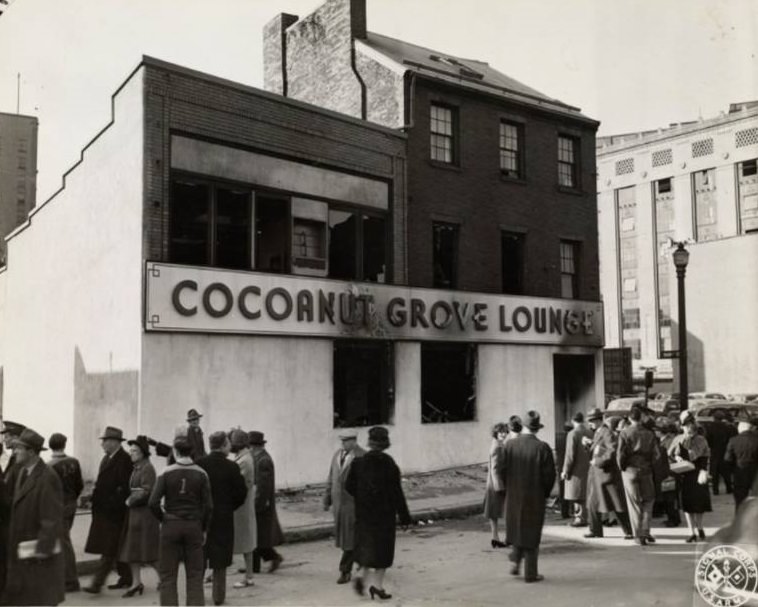
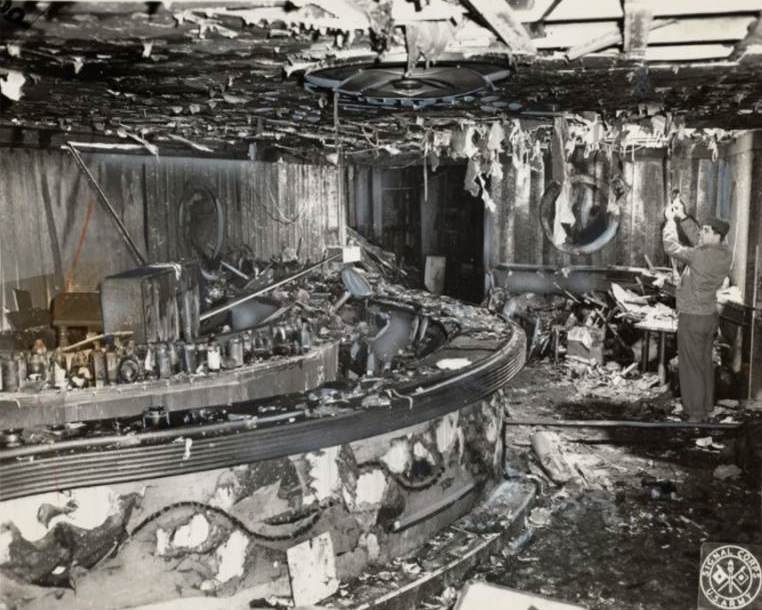
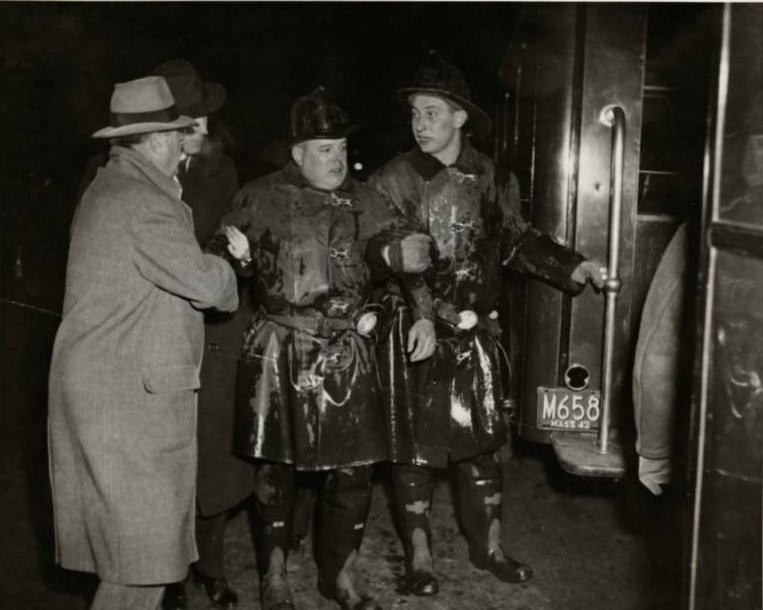
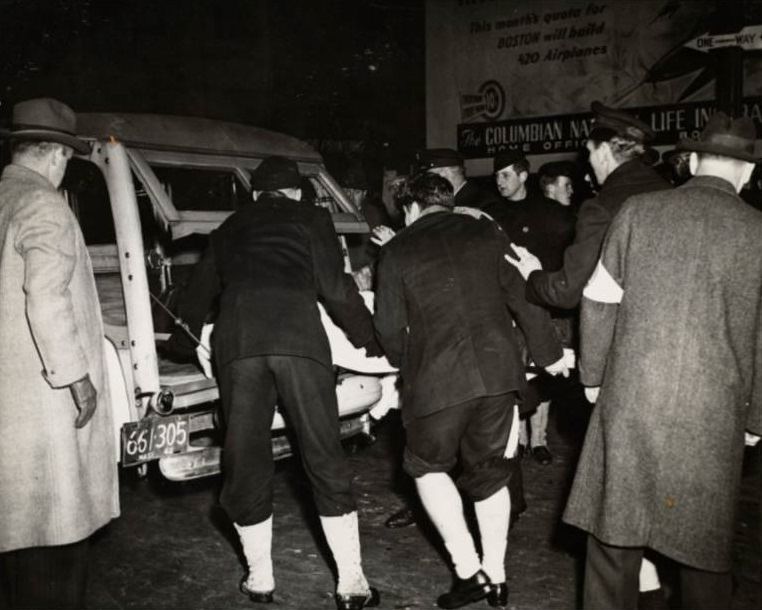
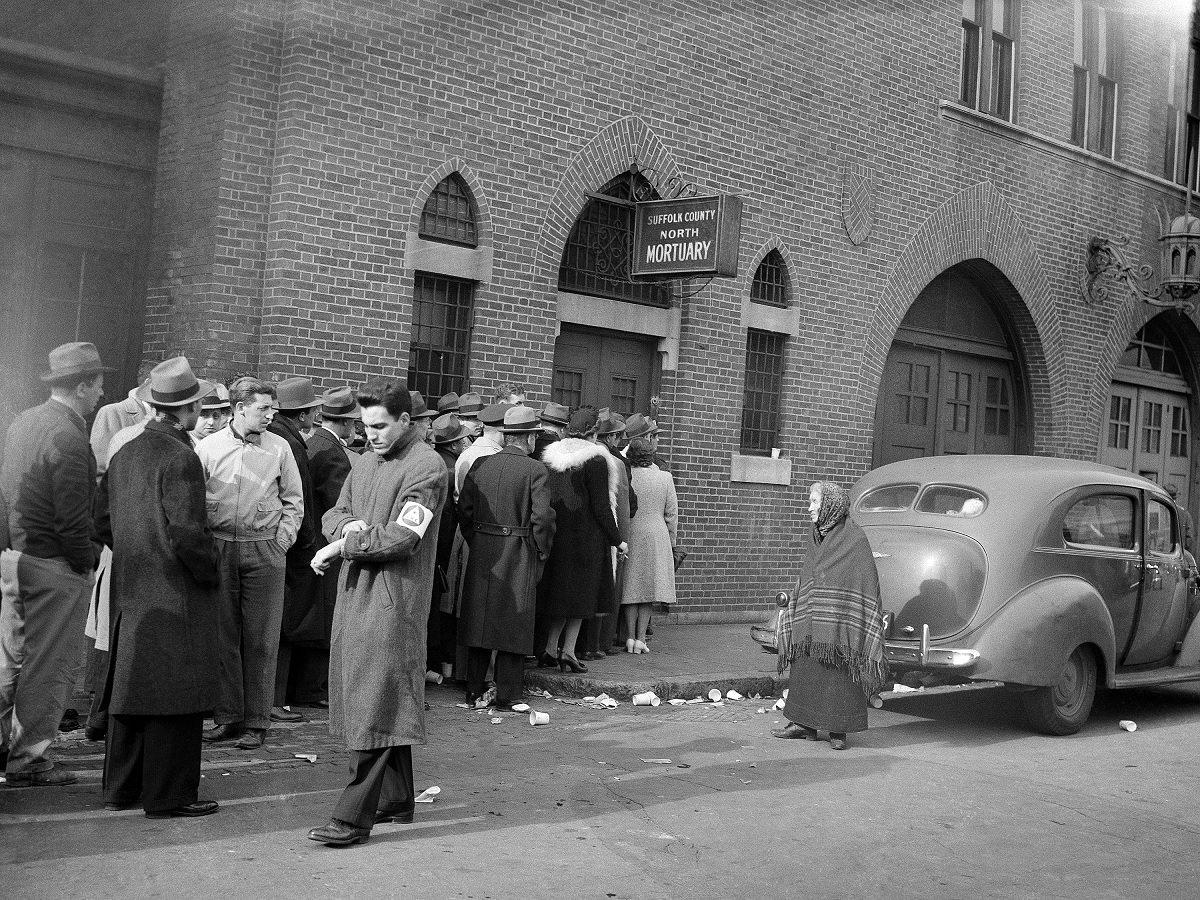
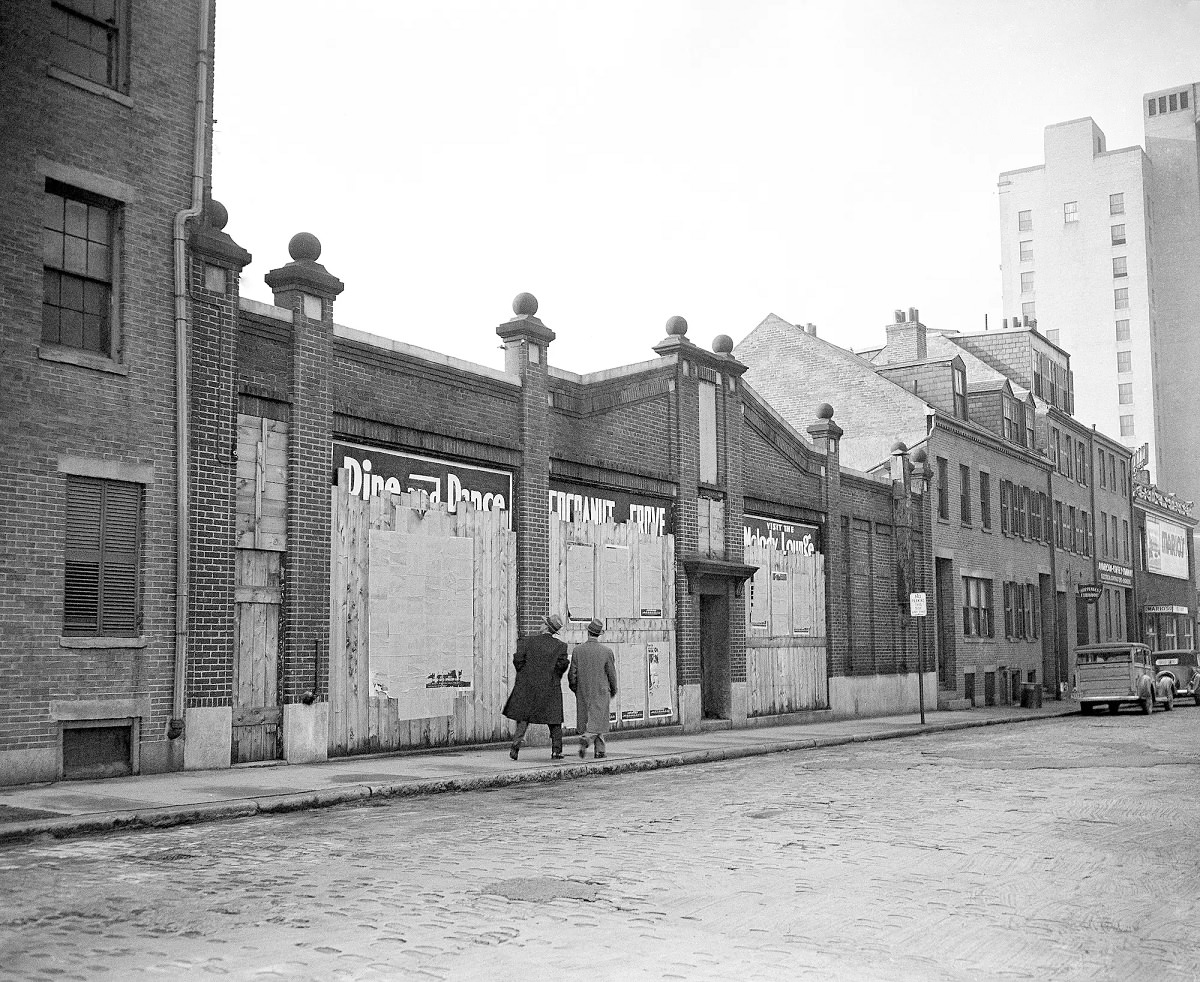
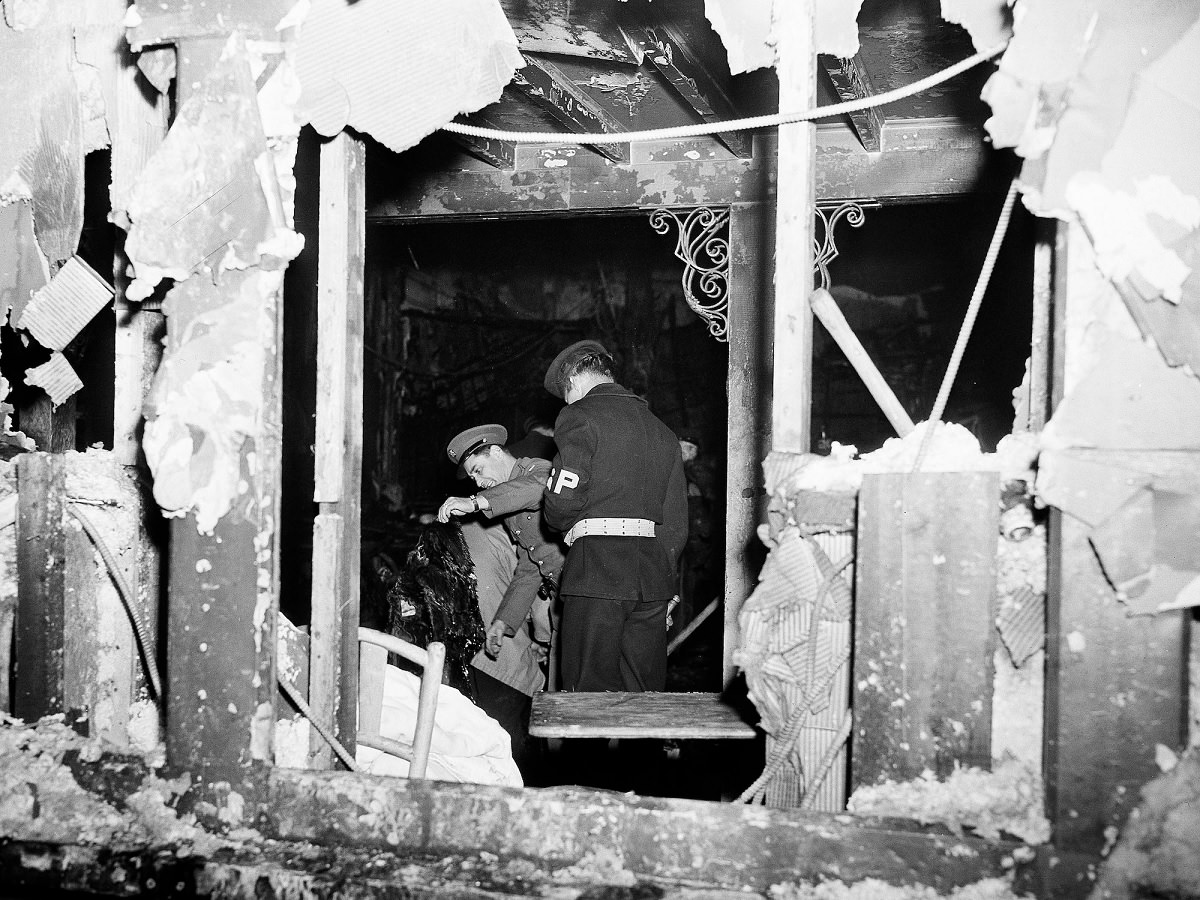
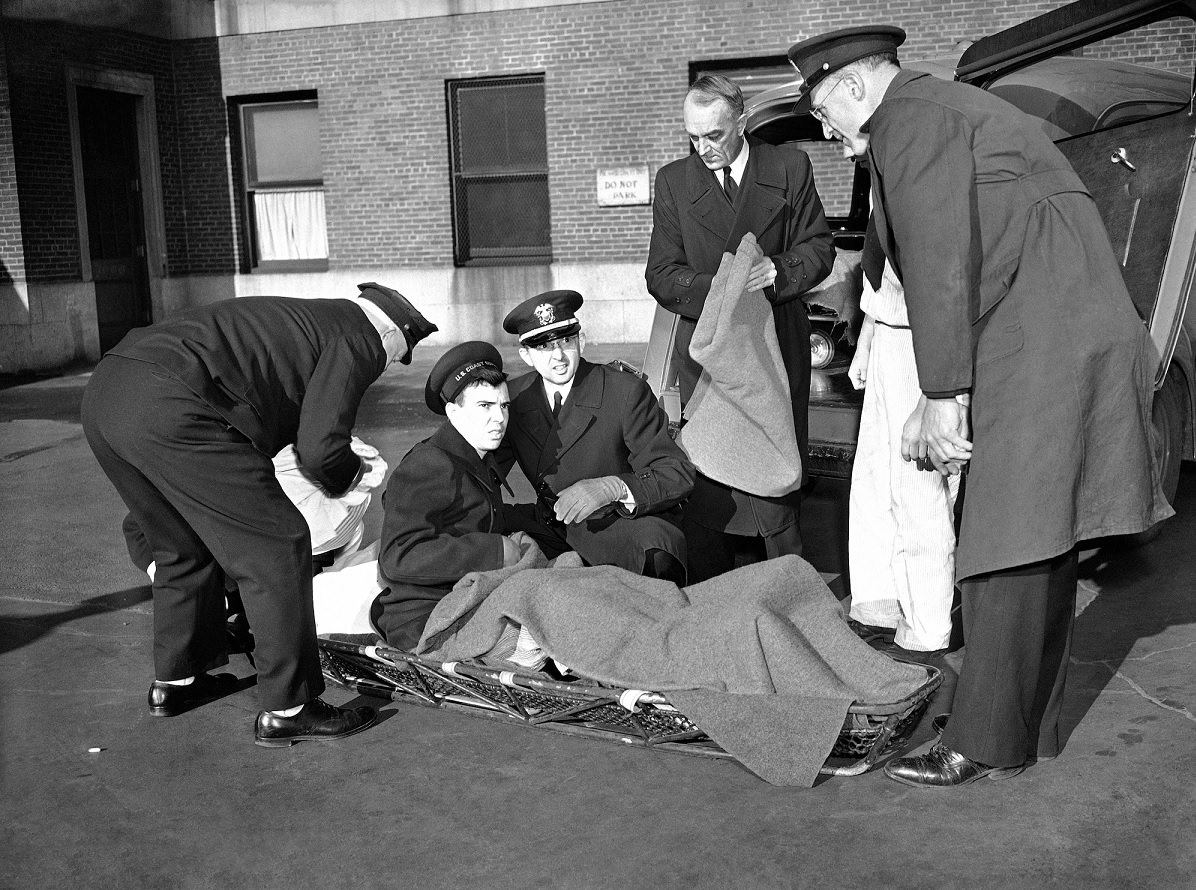
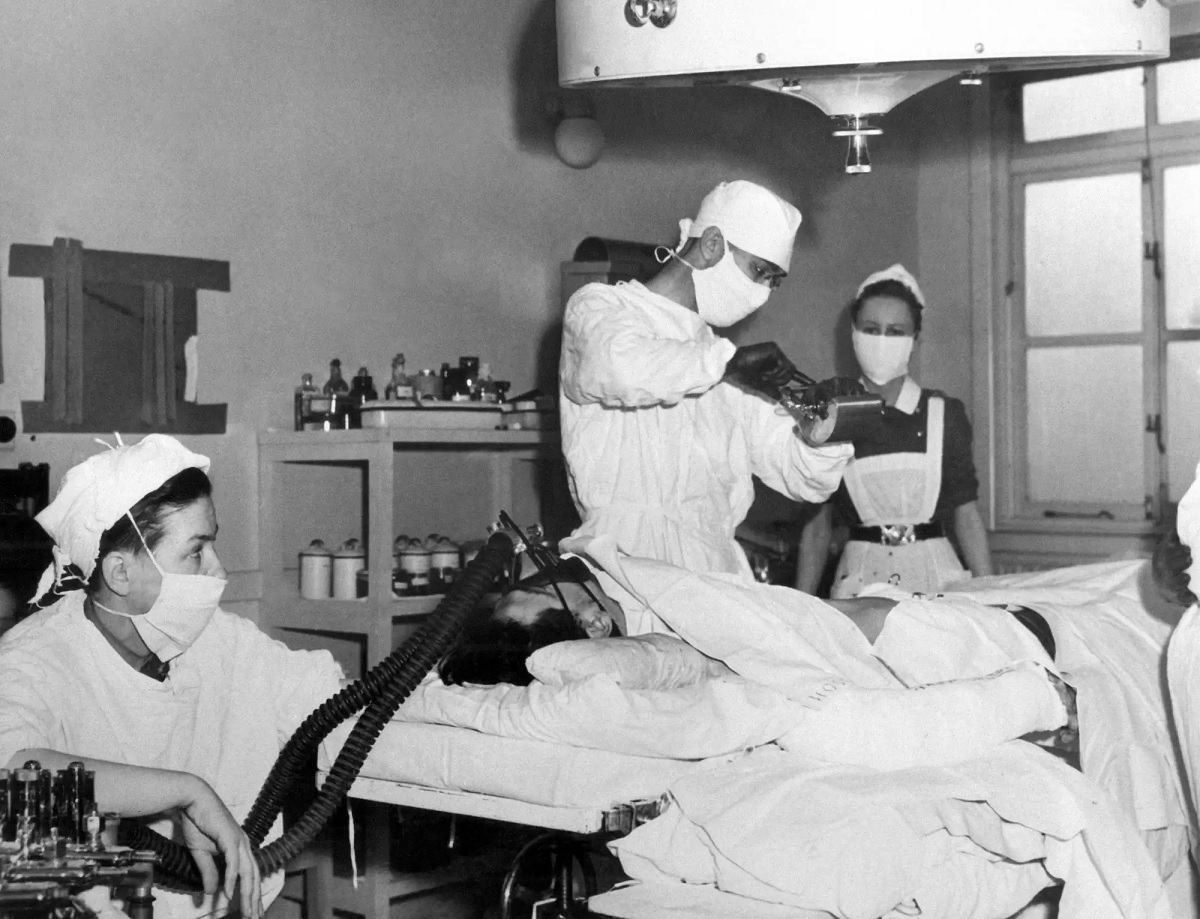
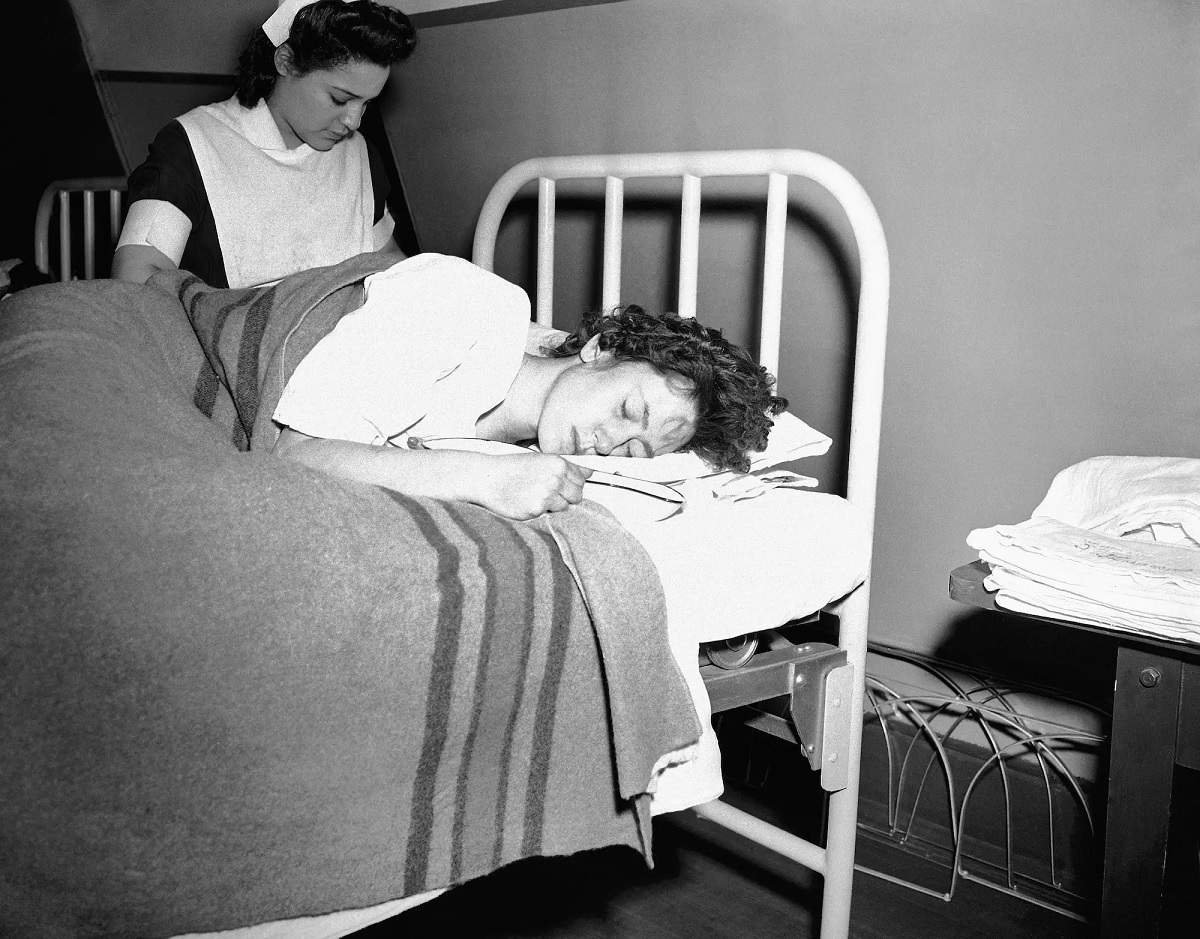
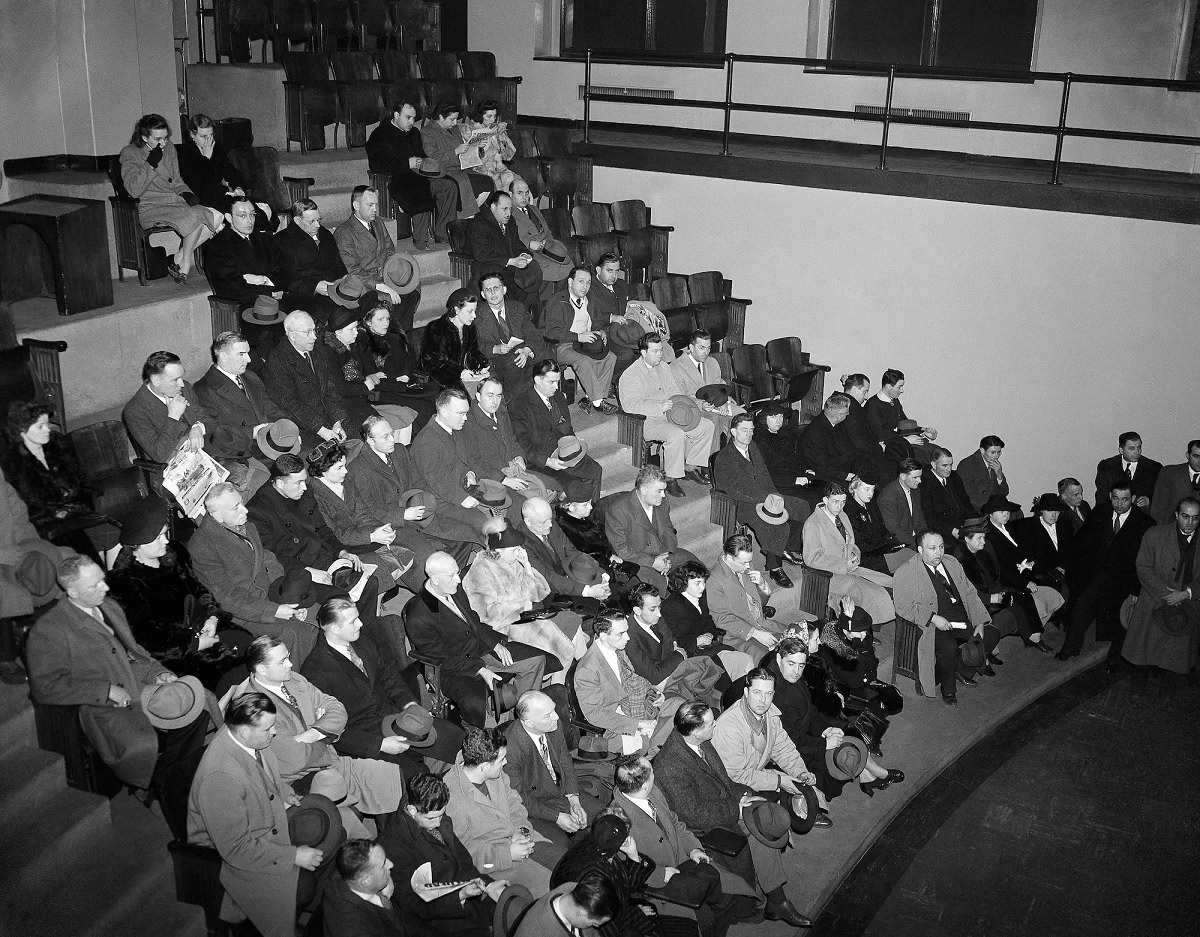
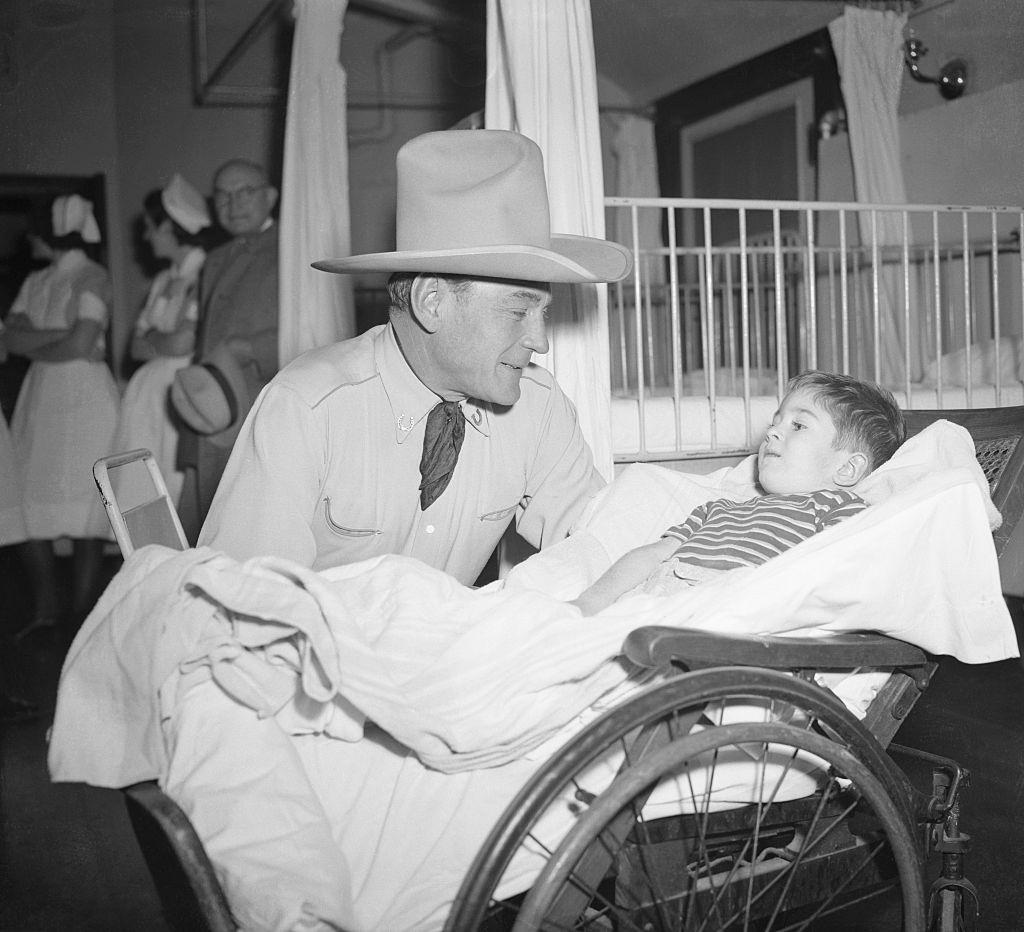
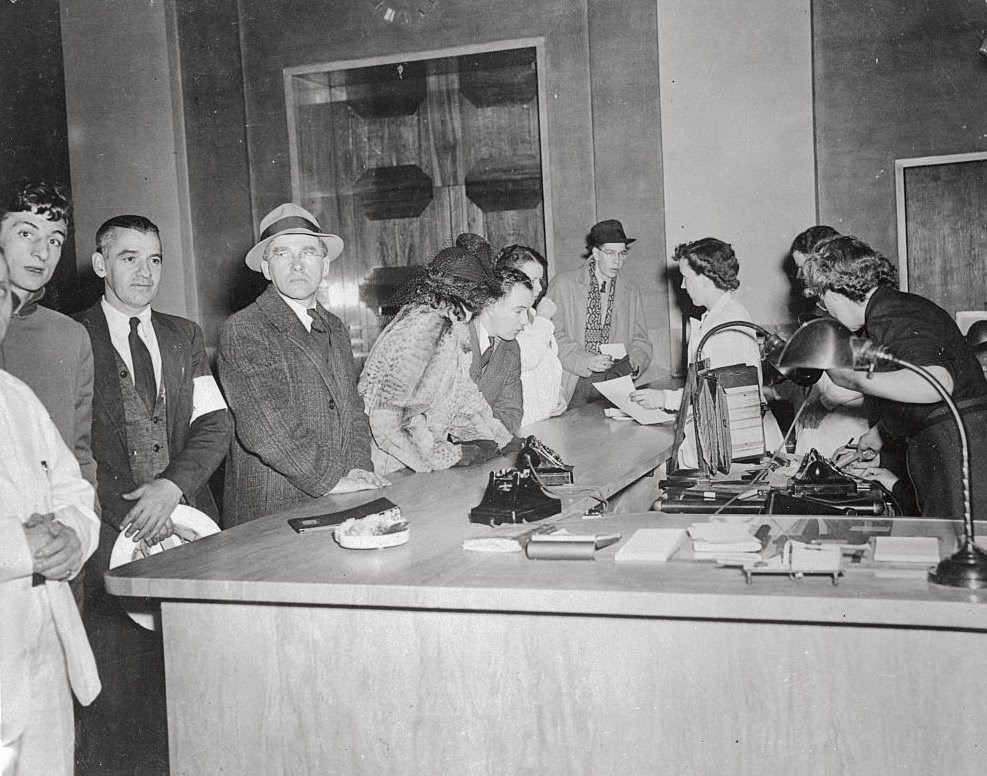




I think they just built some luxury condos at this address…
Boston doesn’t have much underground / basement show culture because of this. They crack down on those because they don’t want a basement full of dead college kids – like the Ghost Ship fire in Oakland.